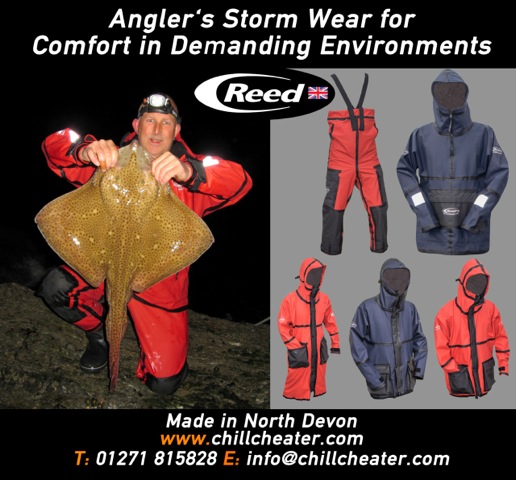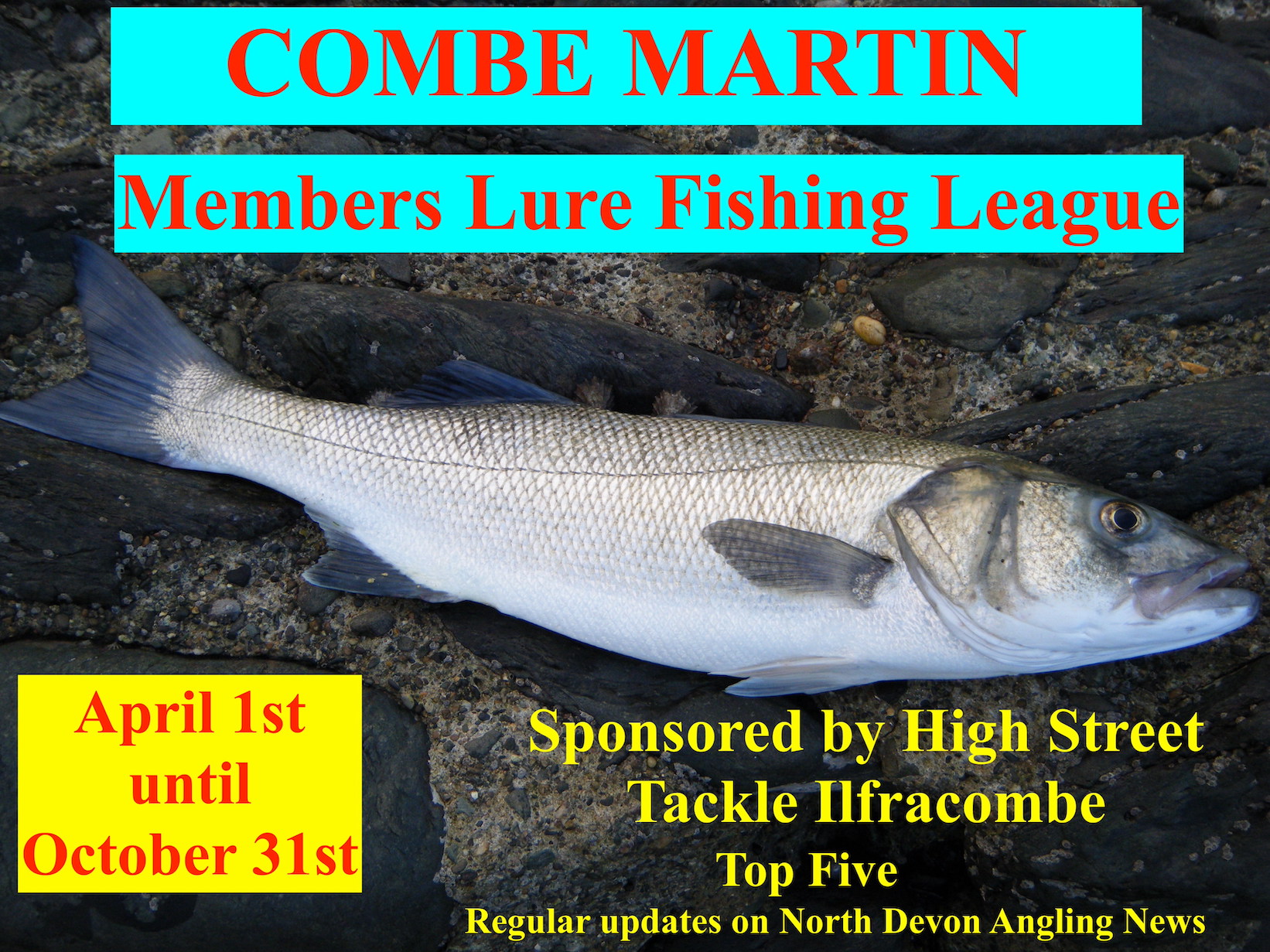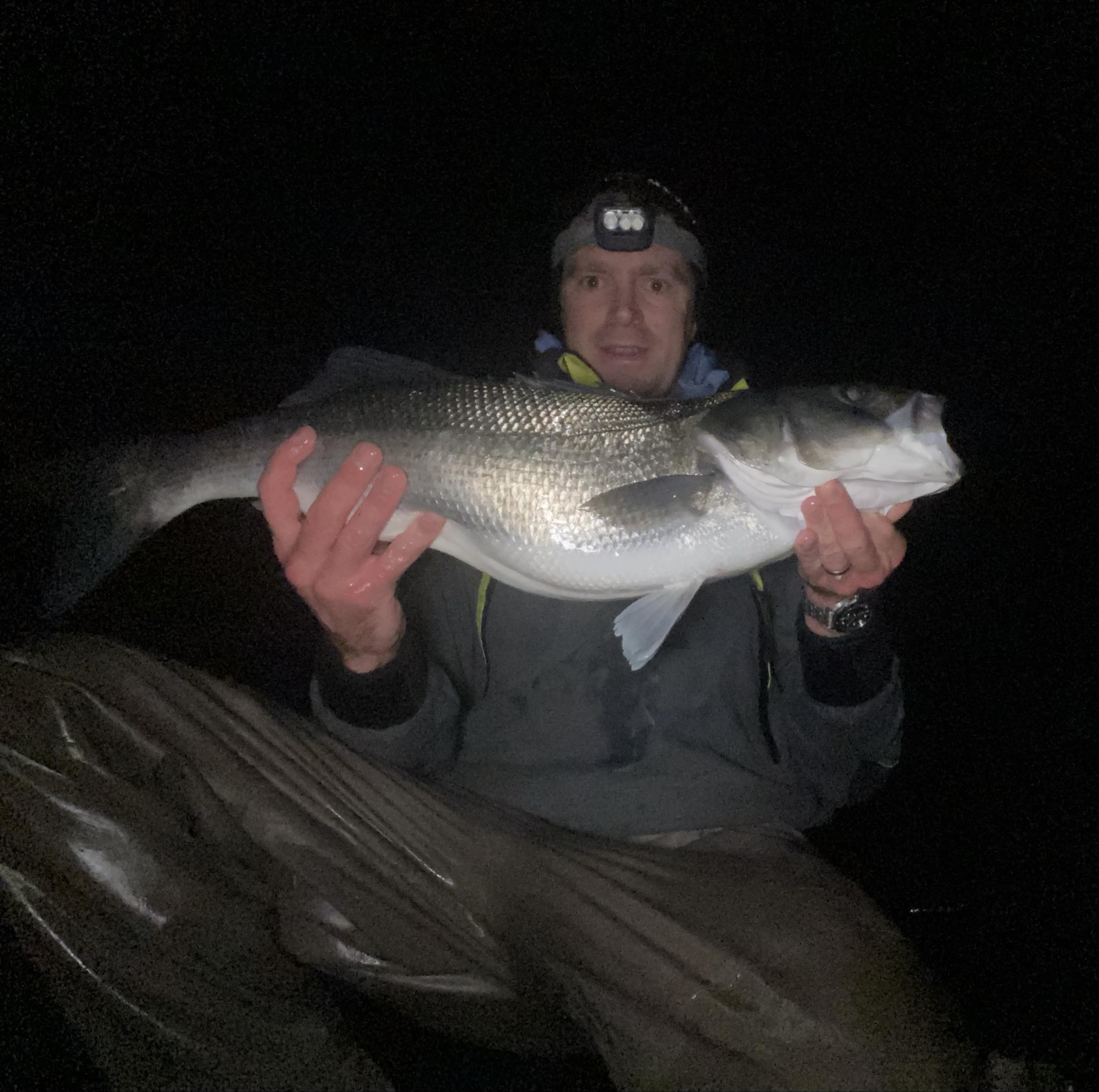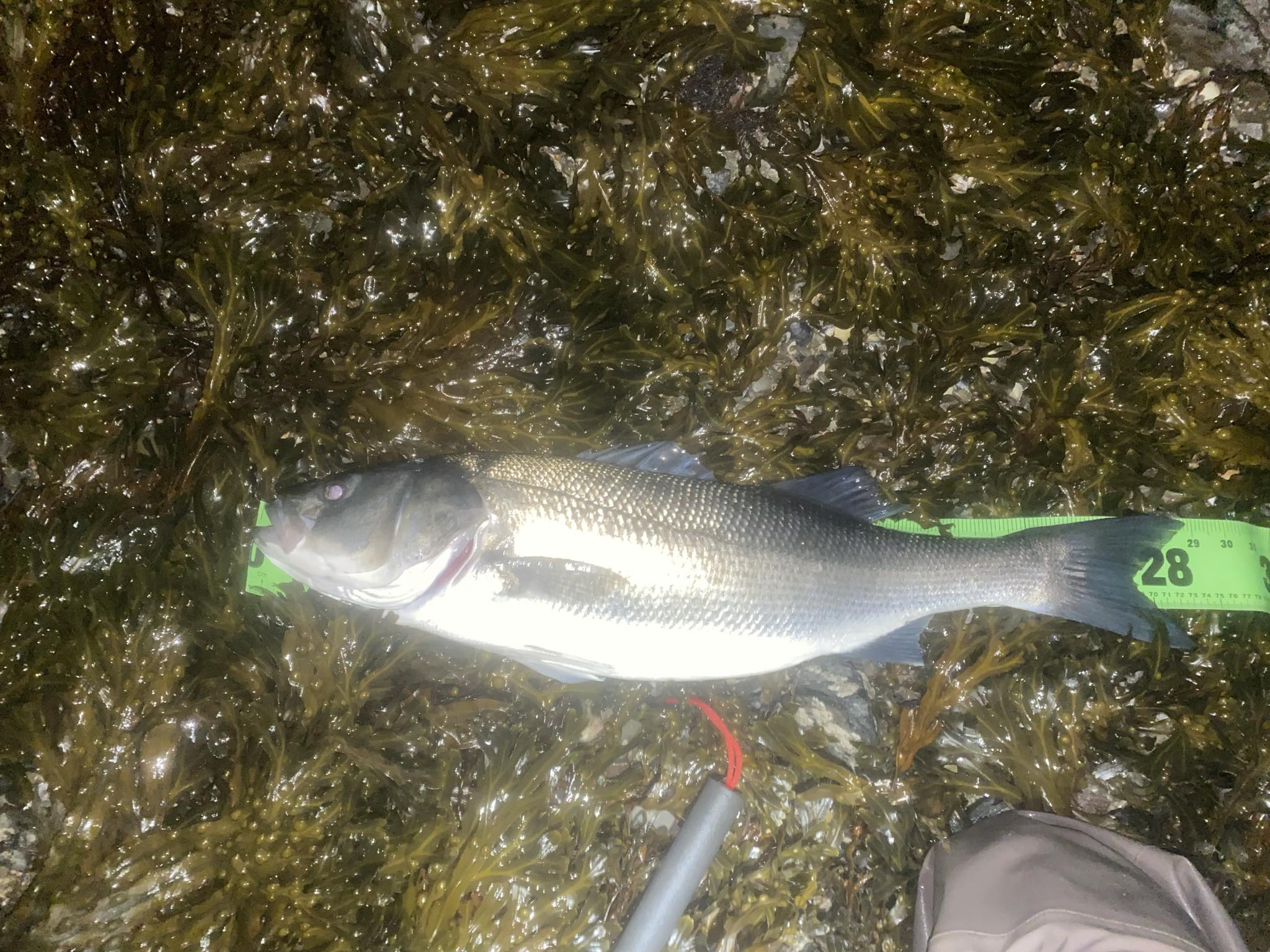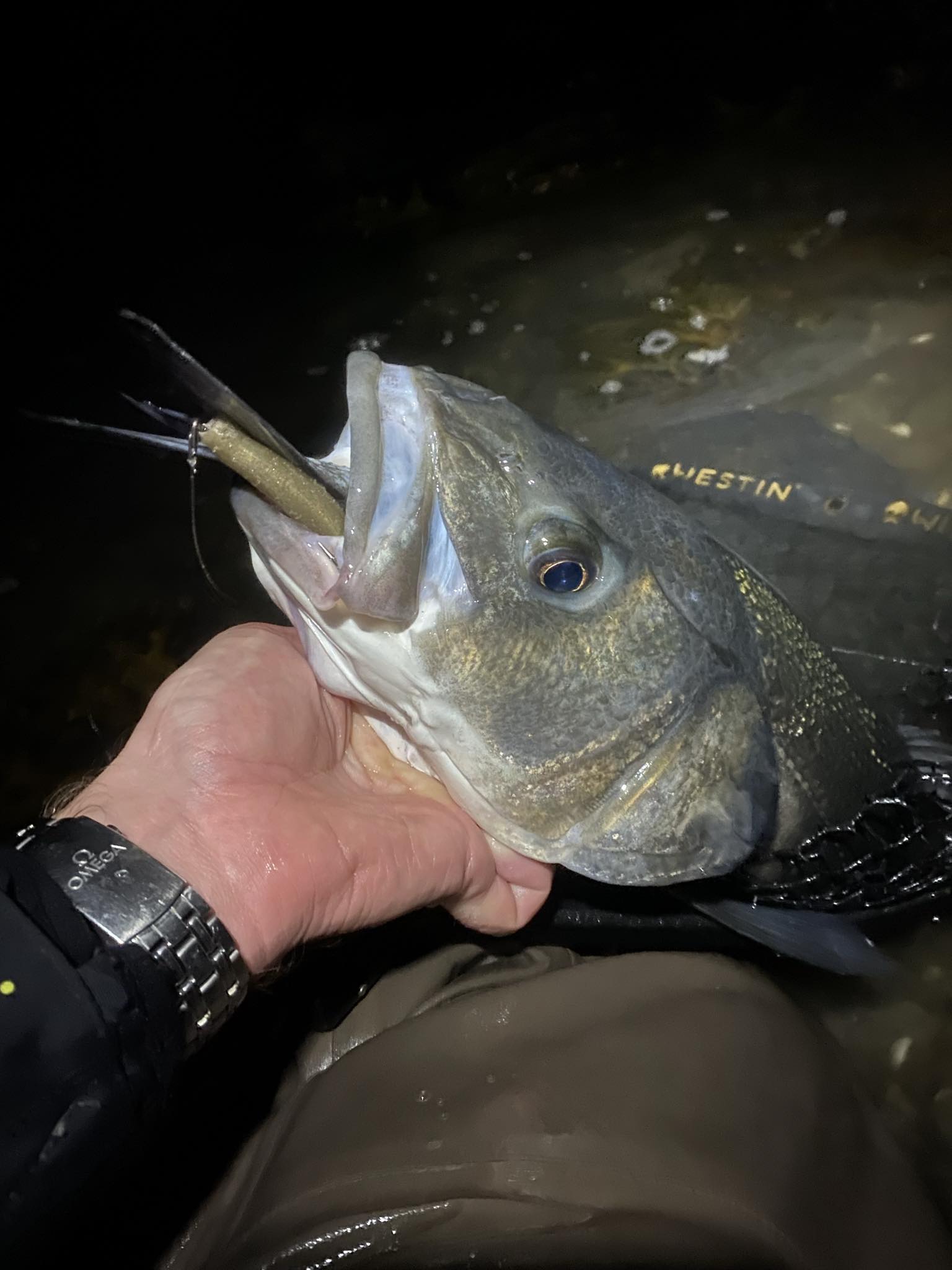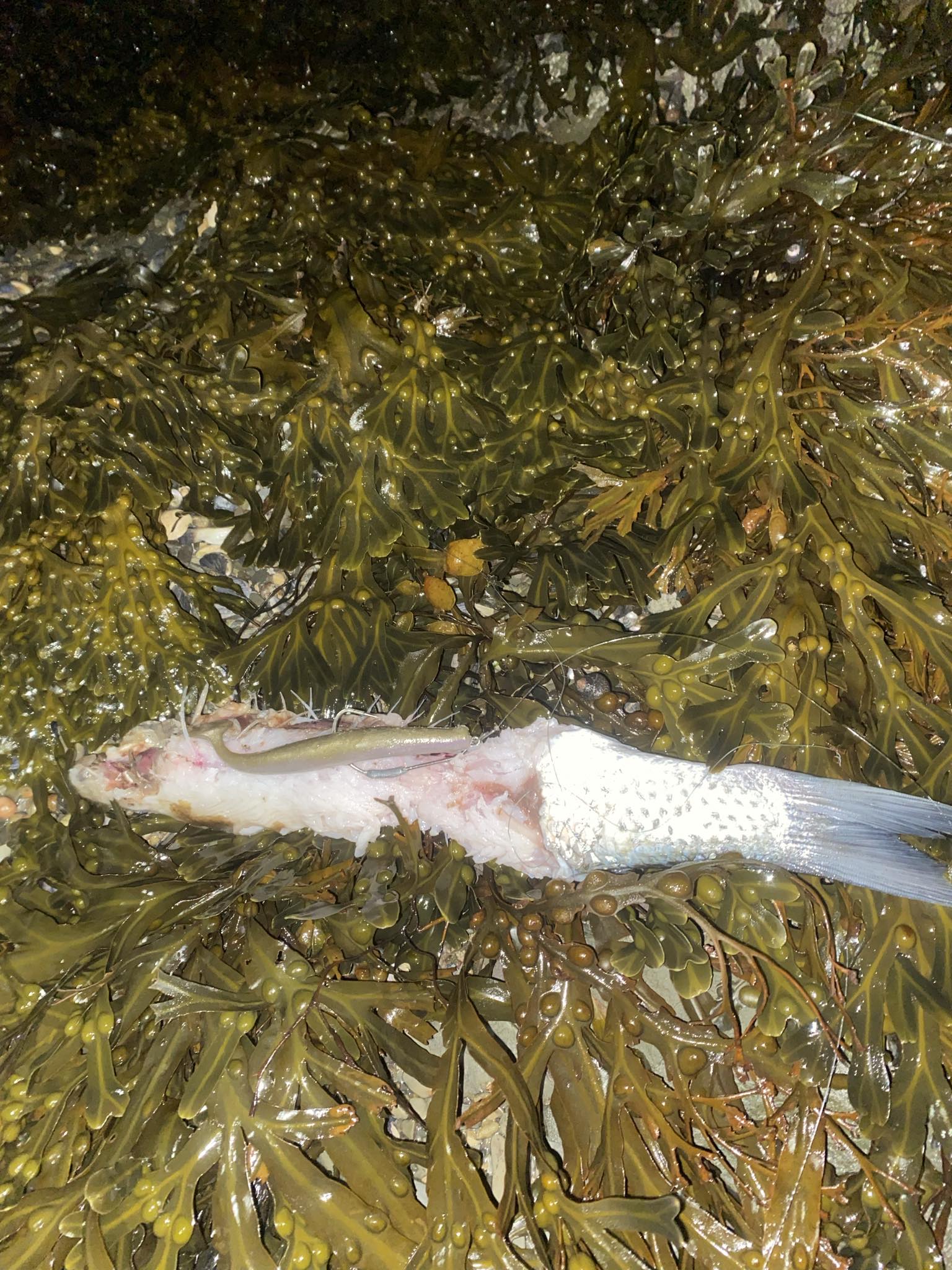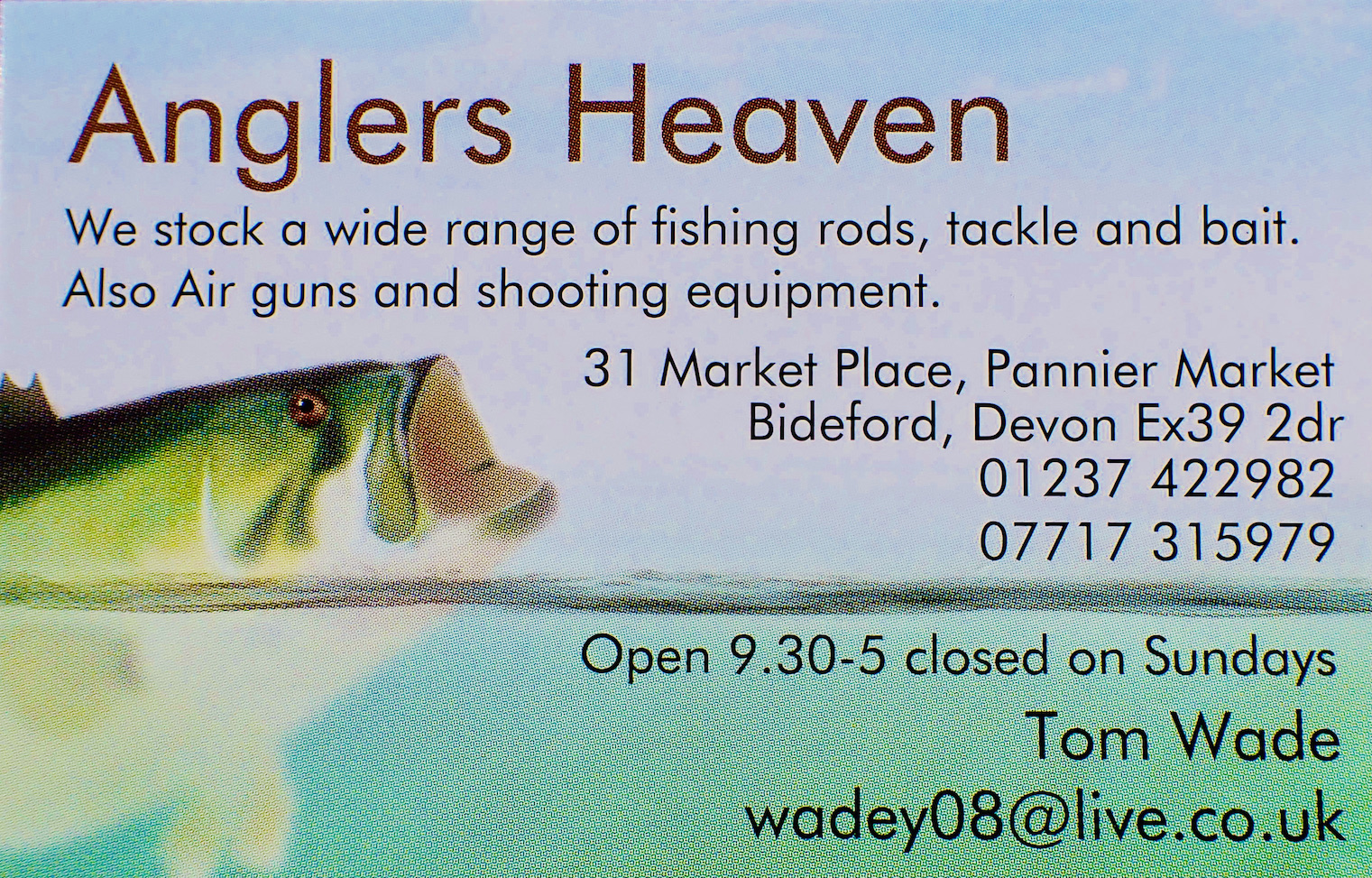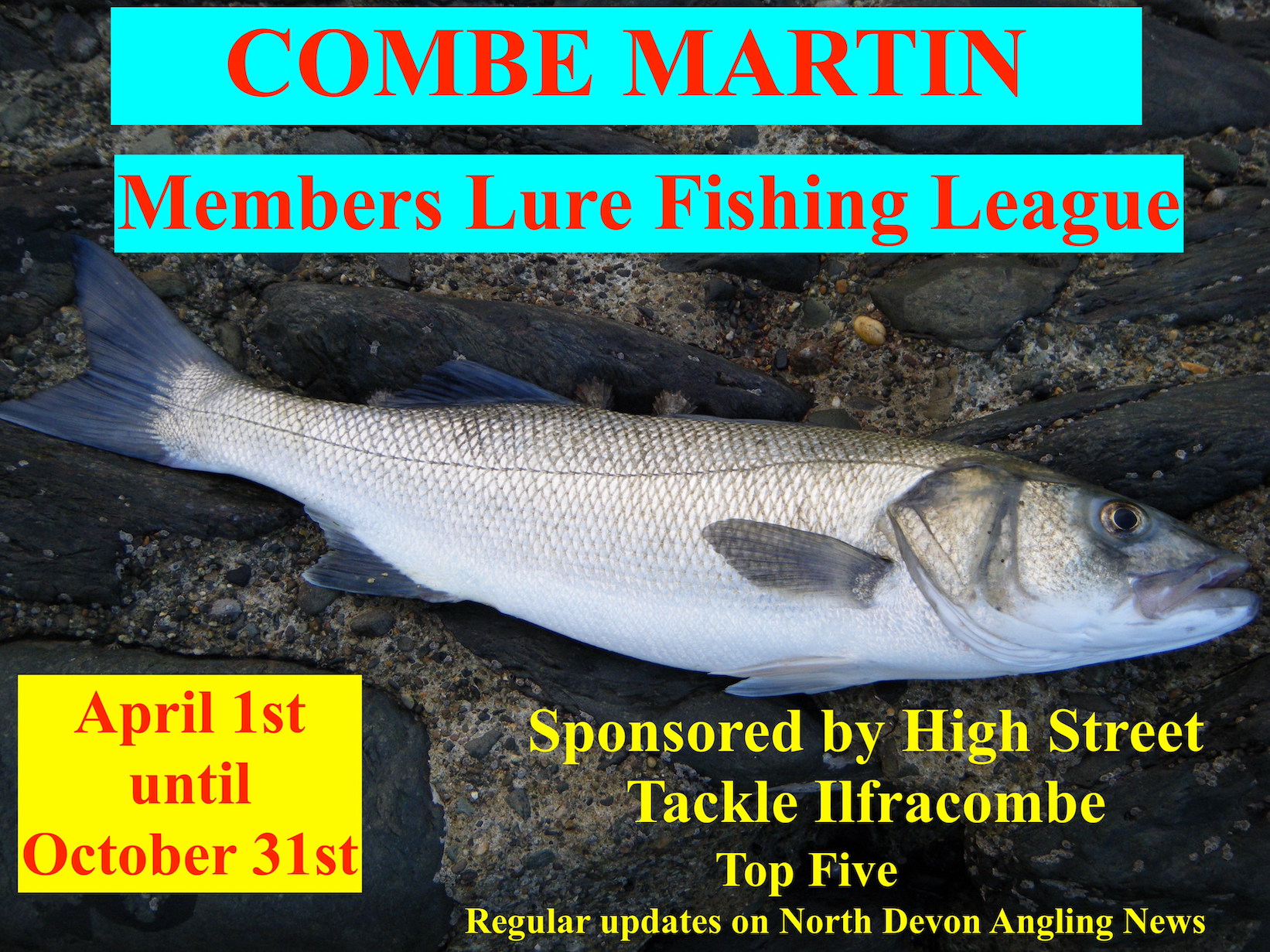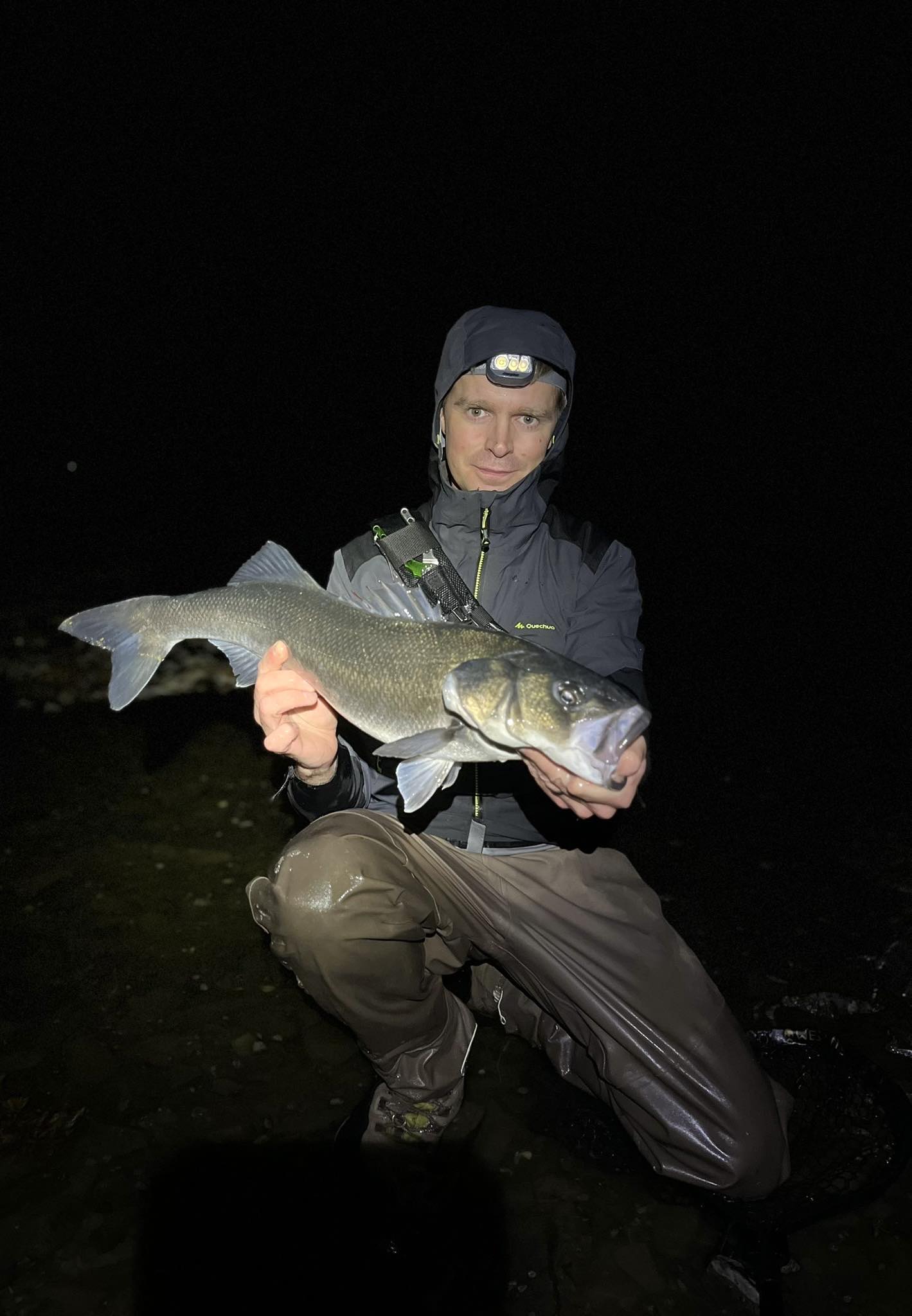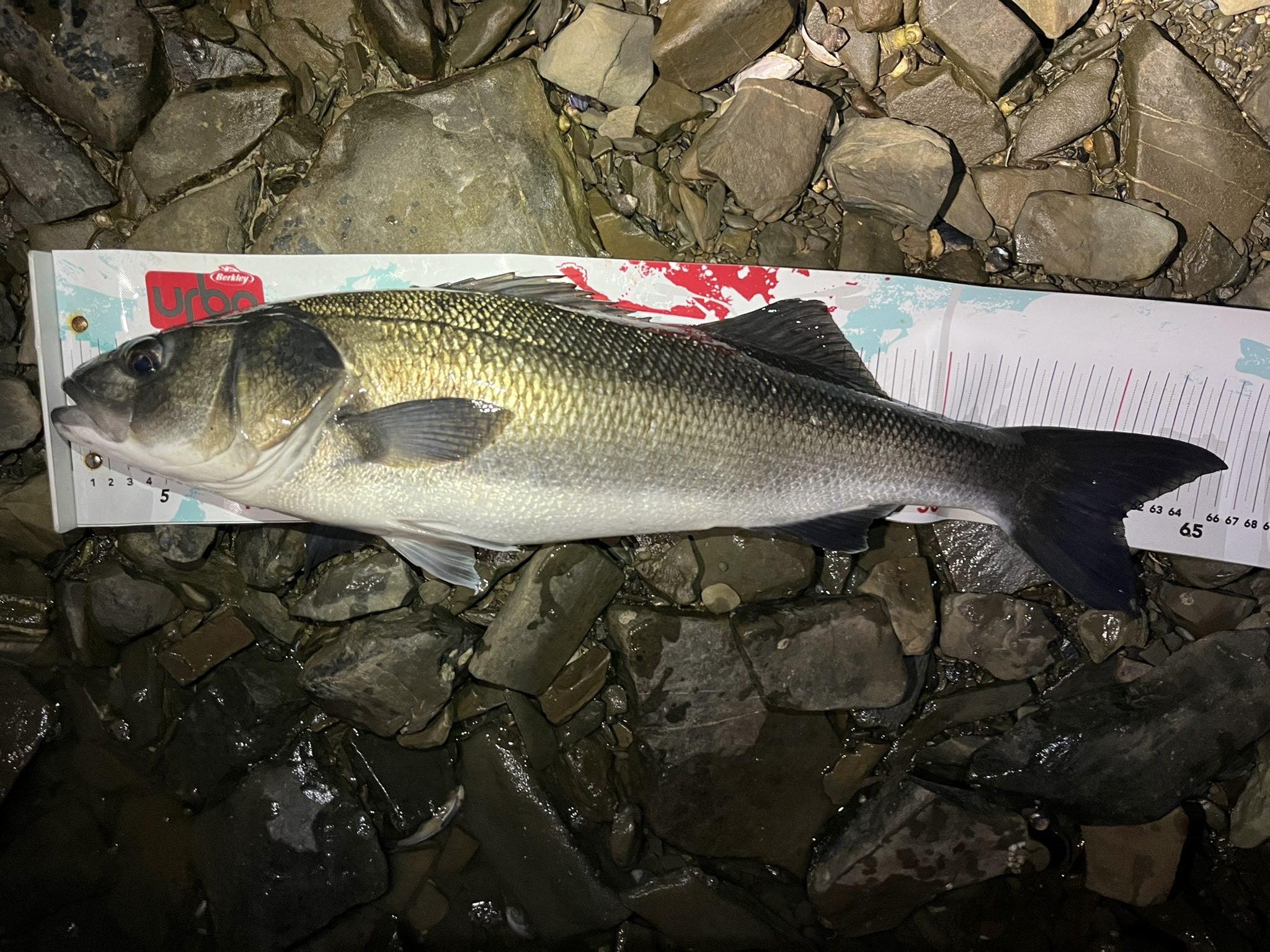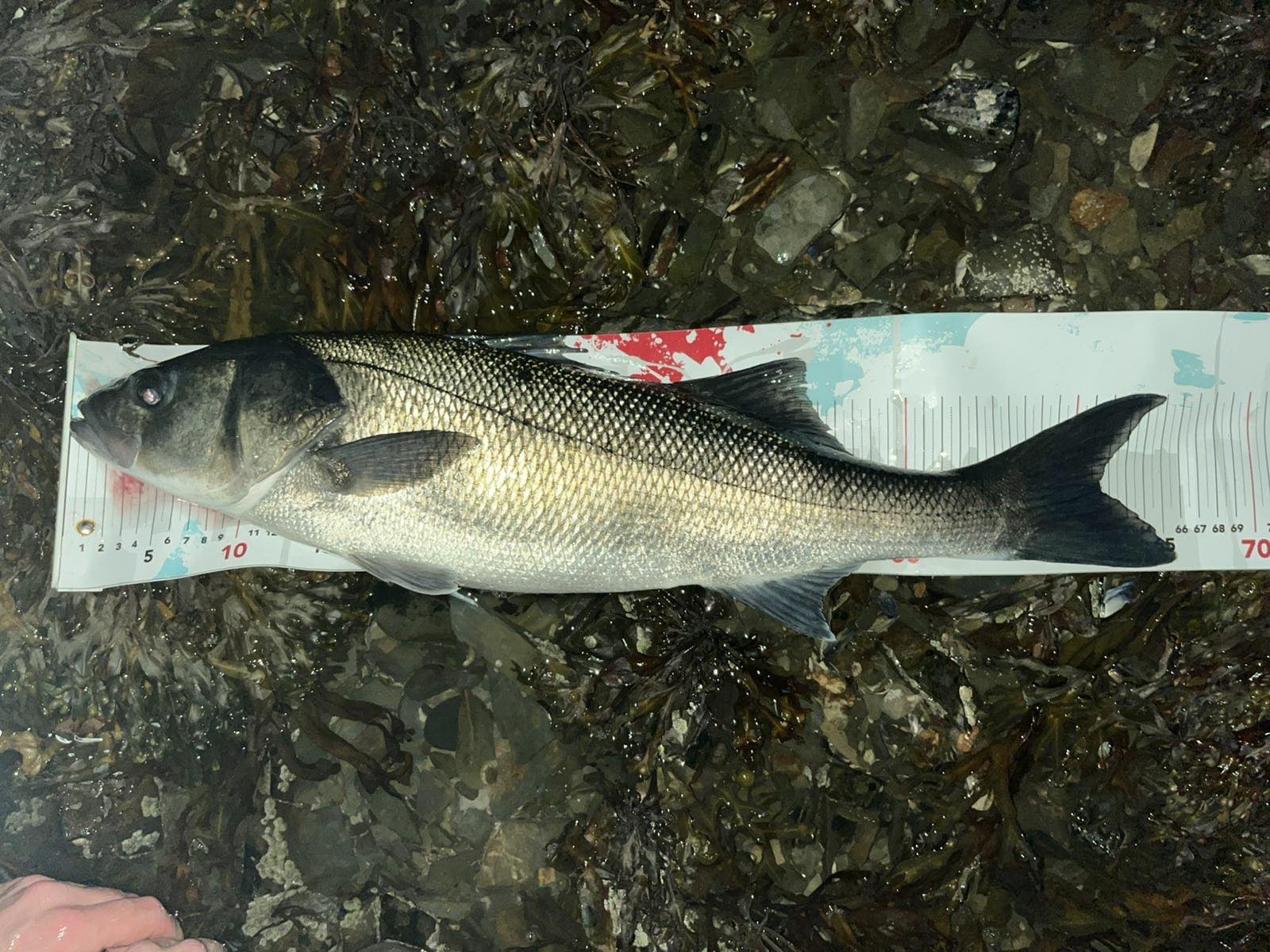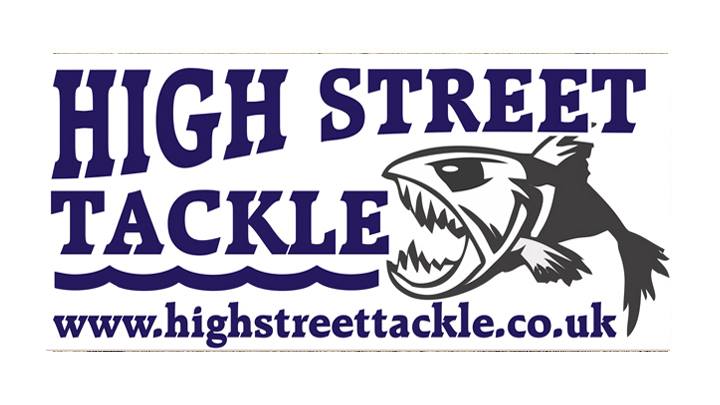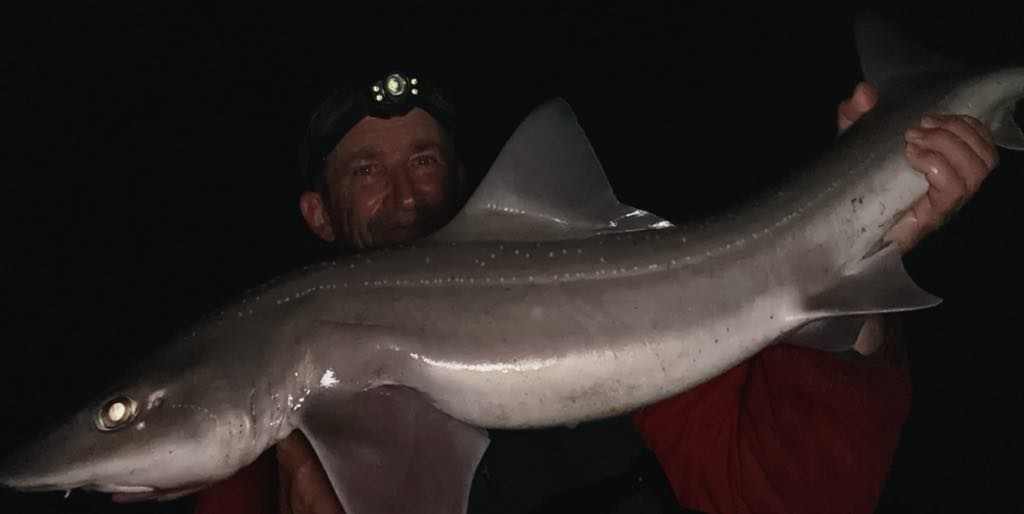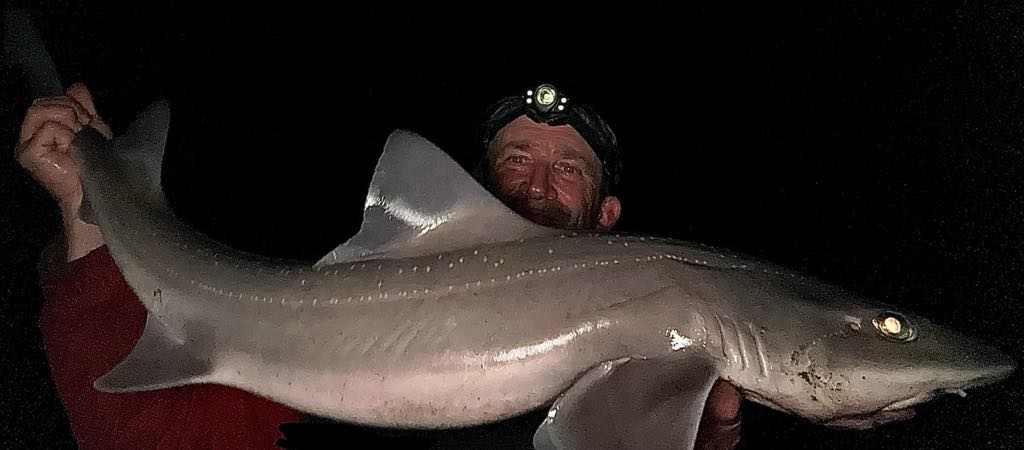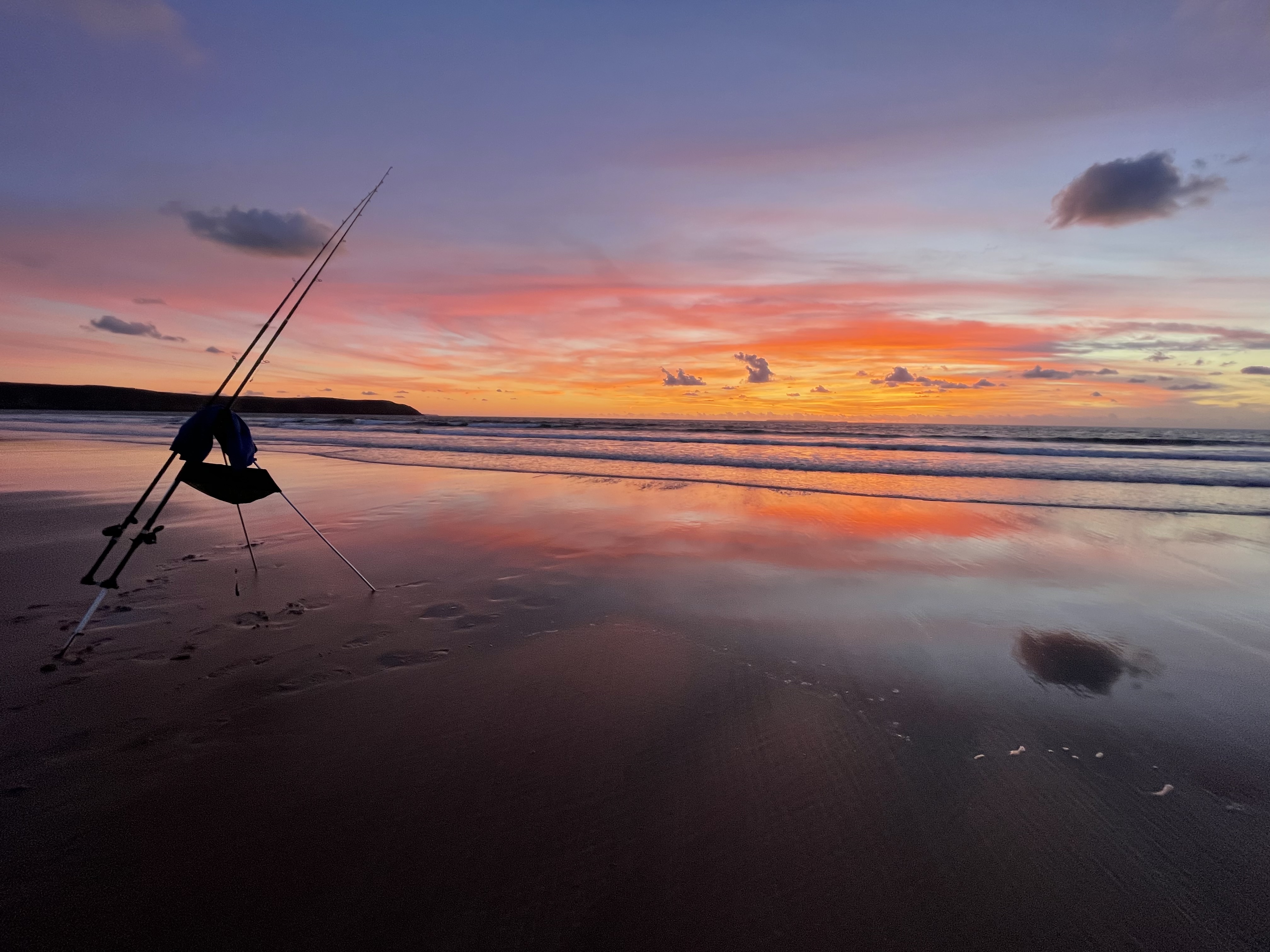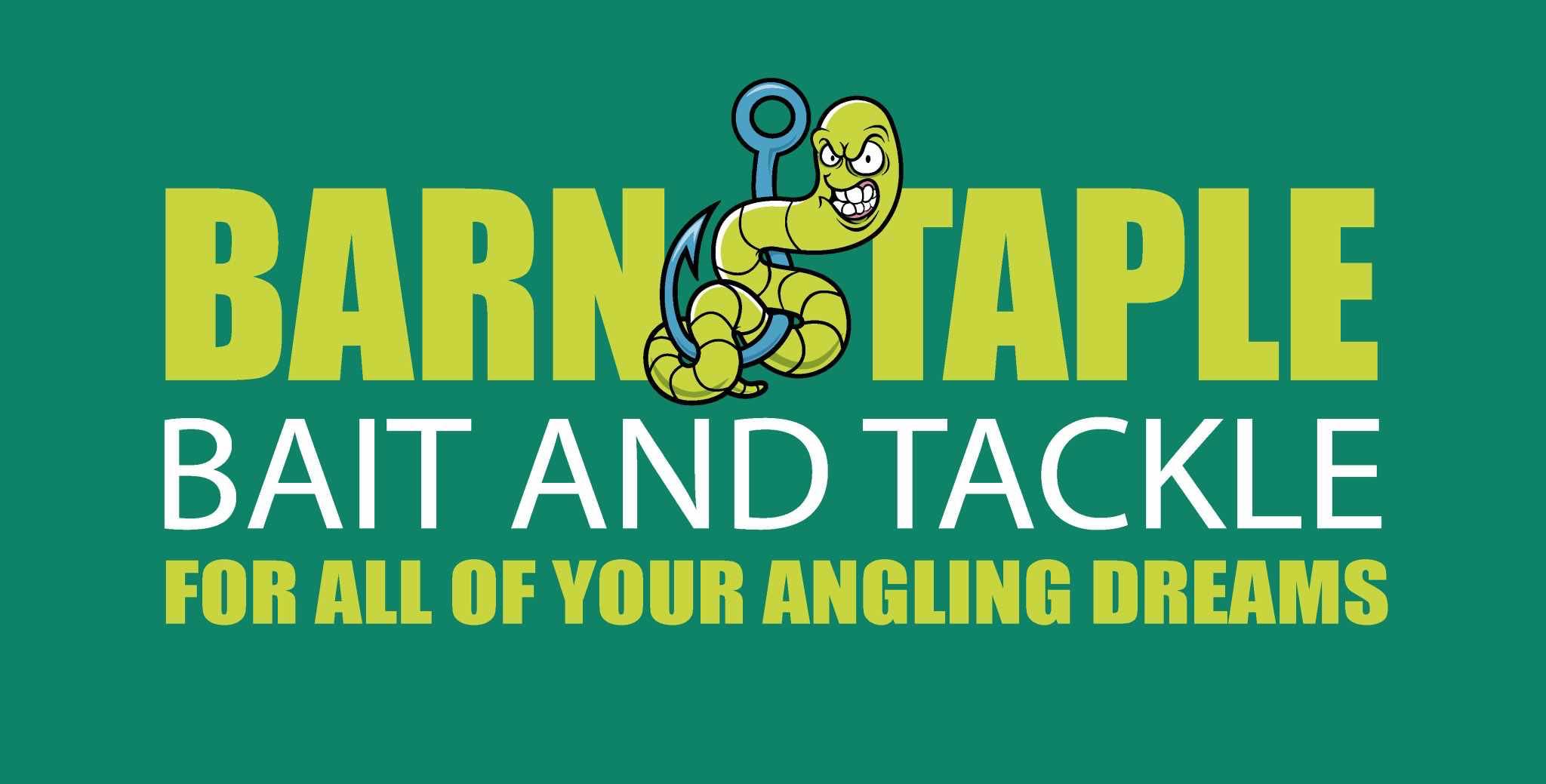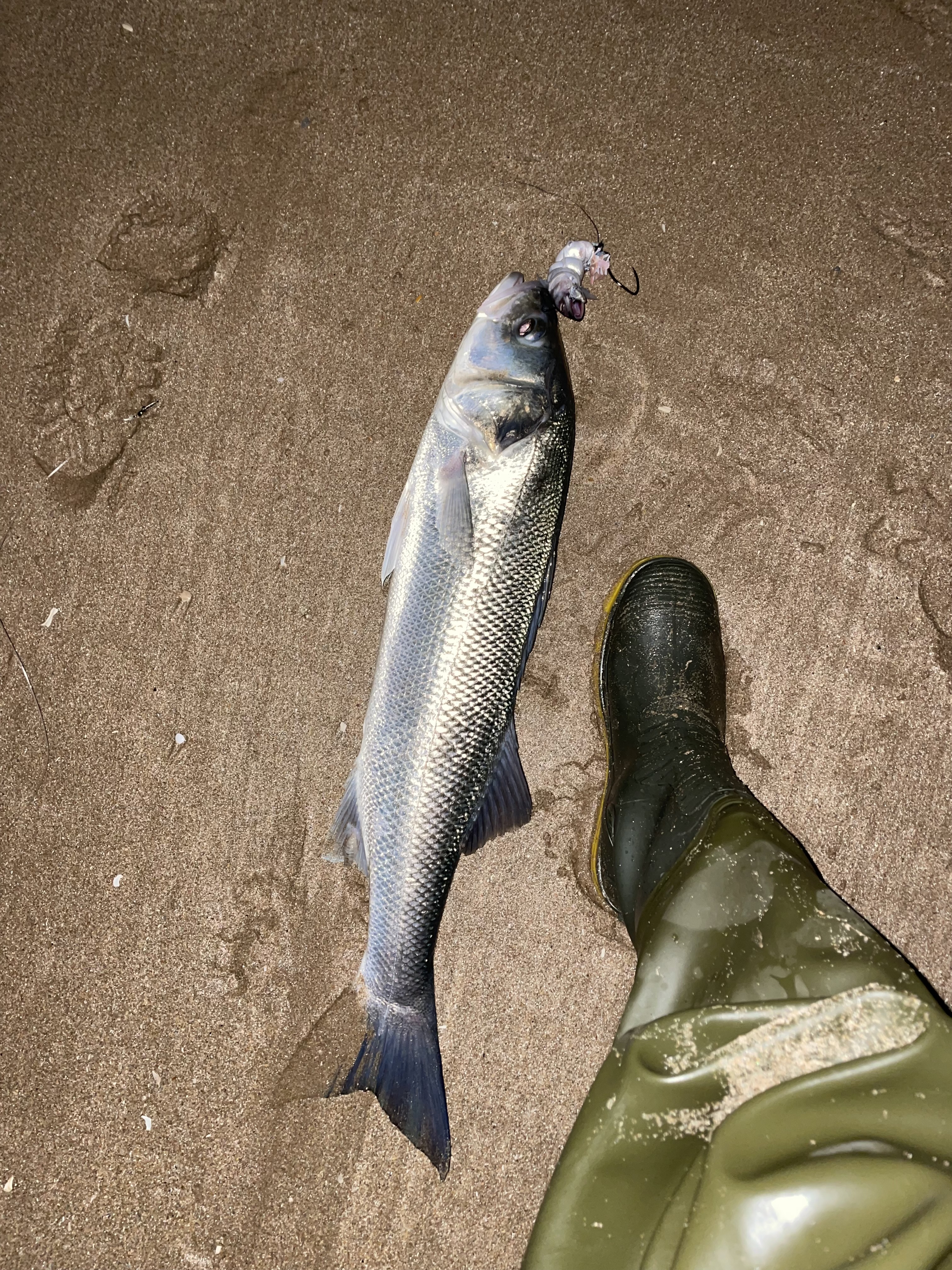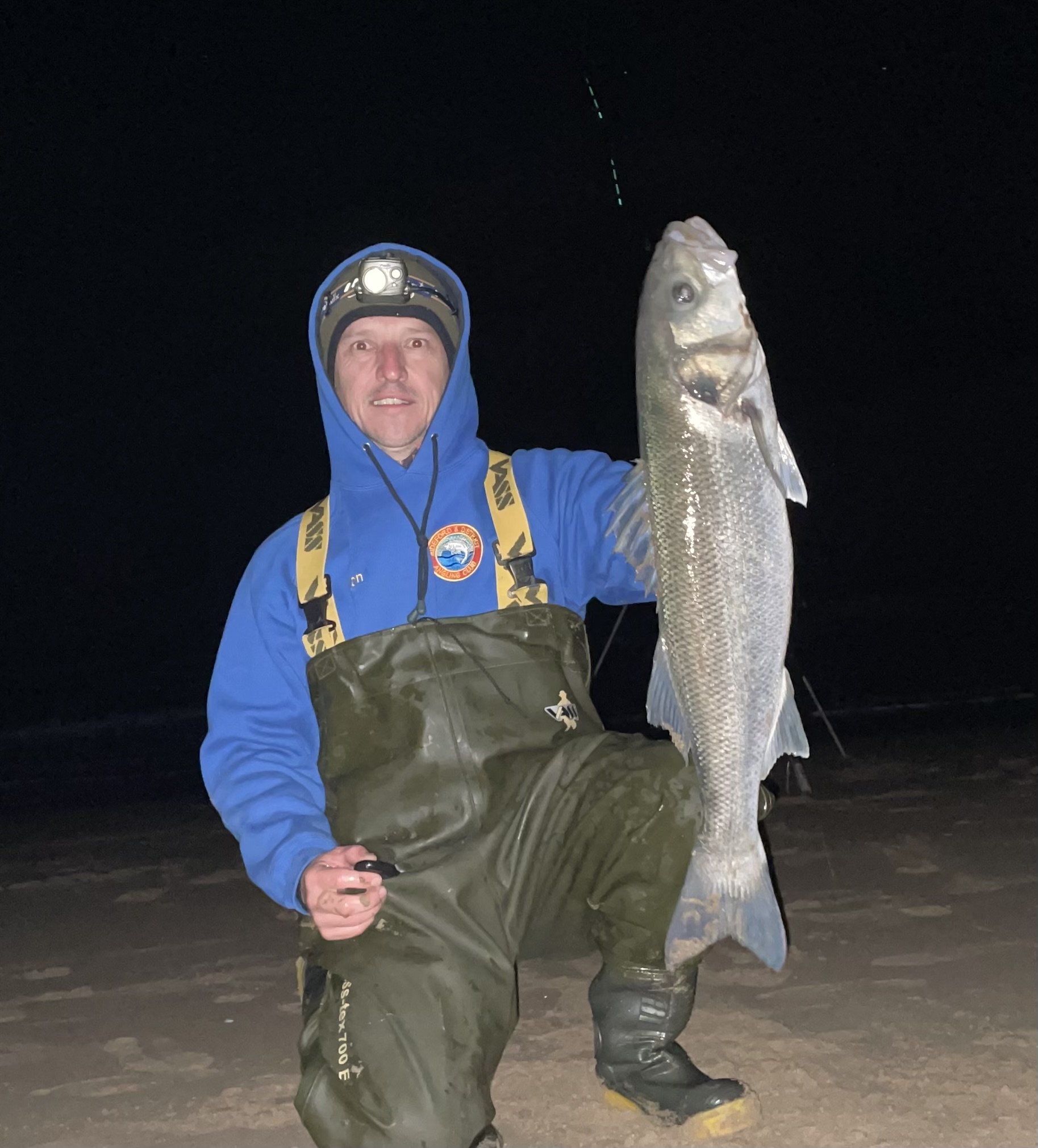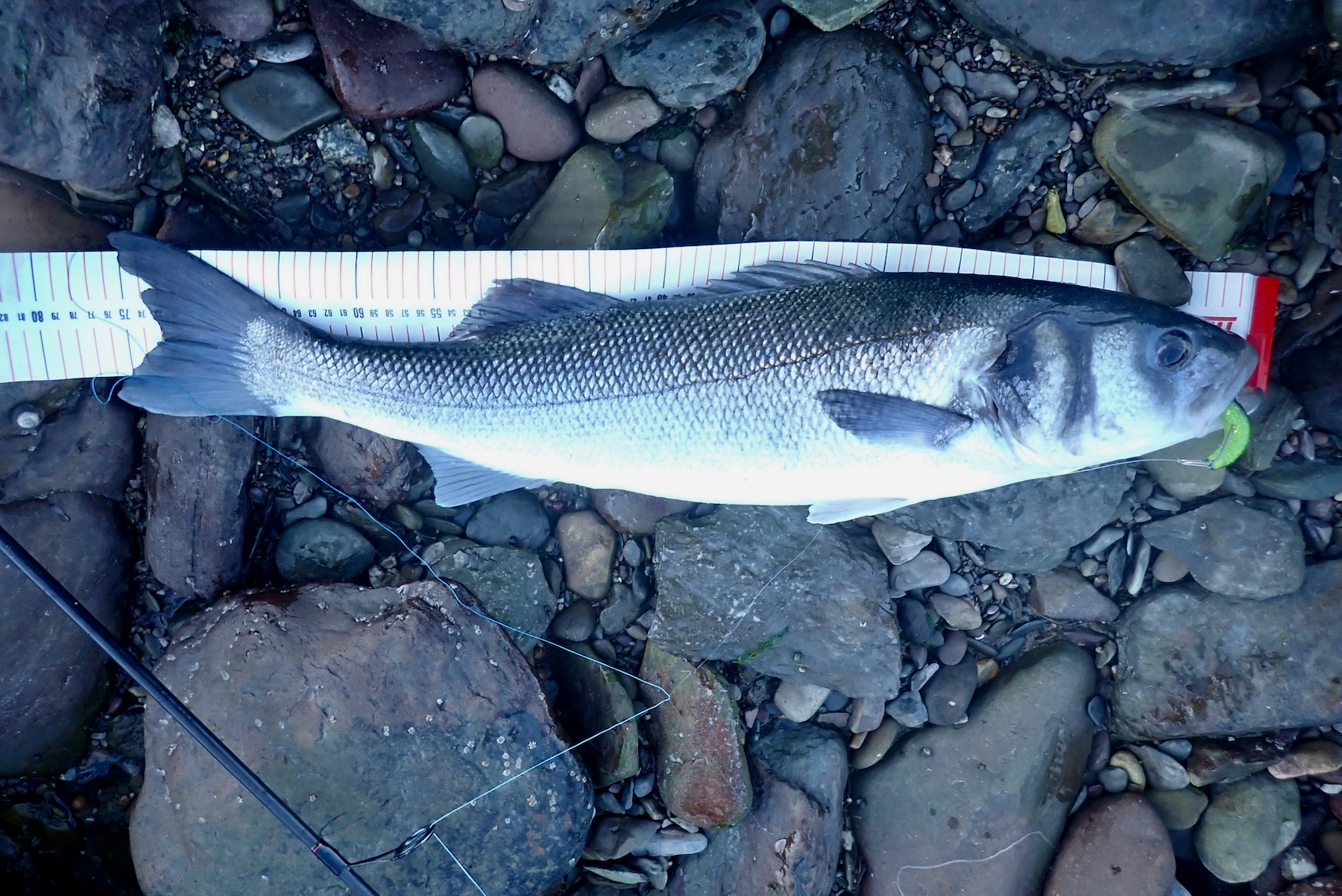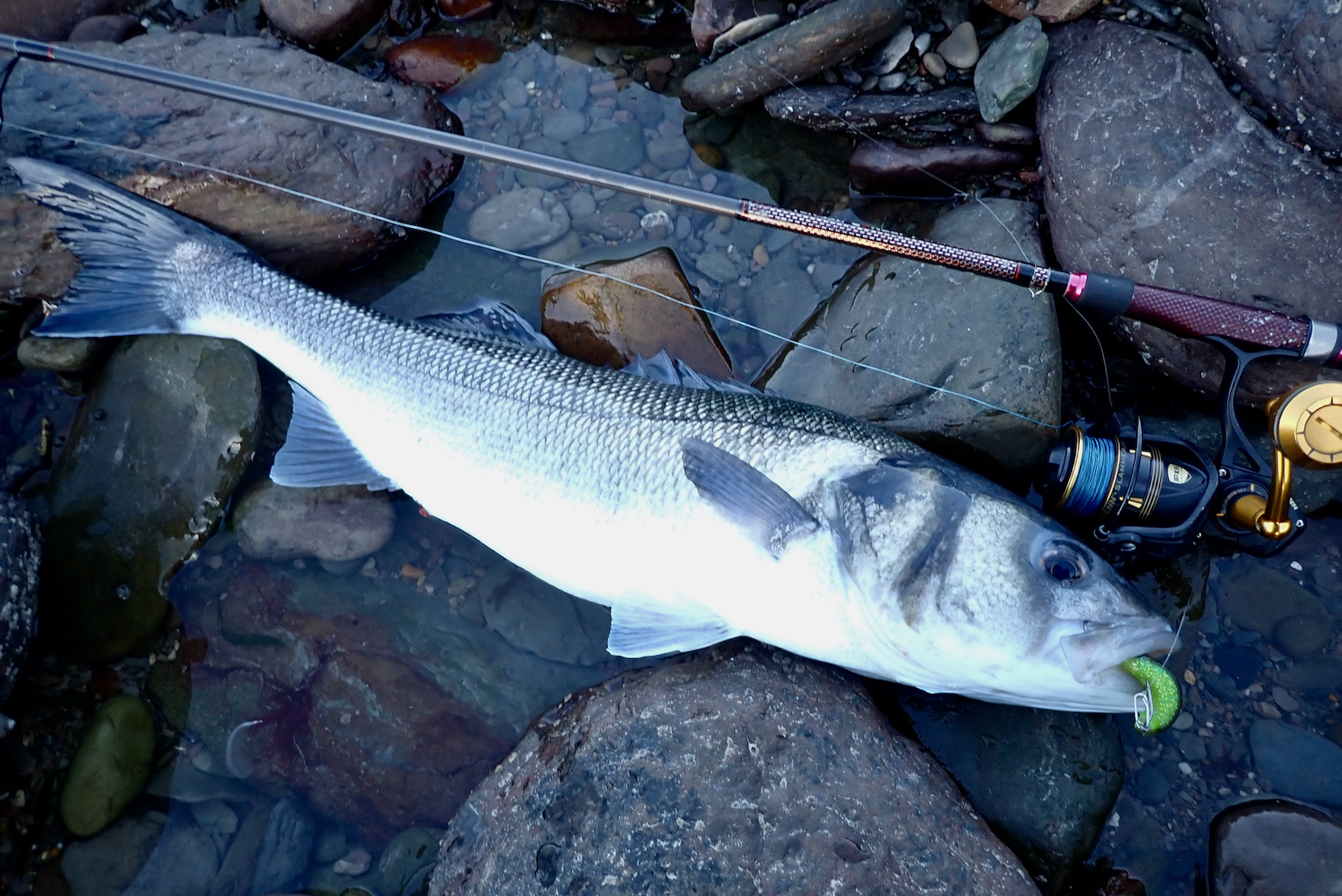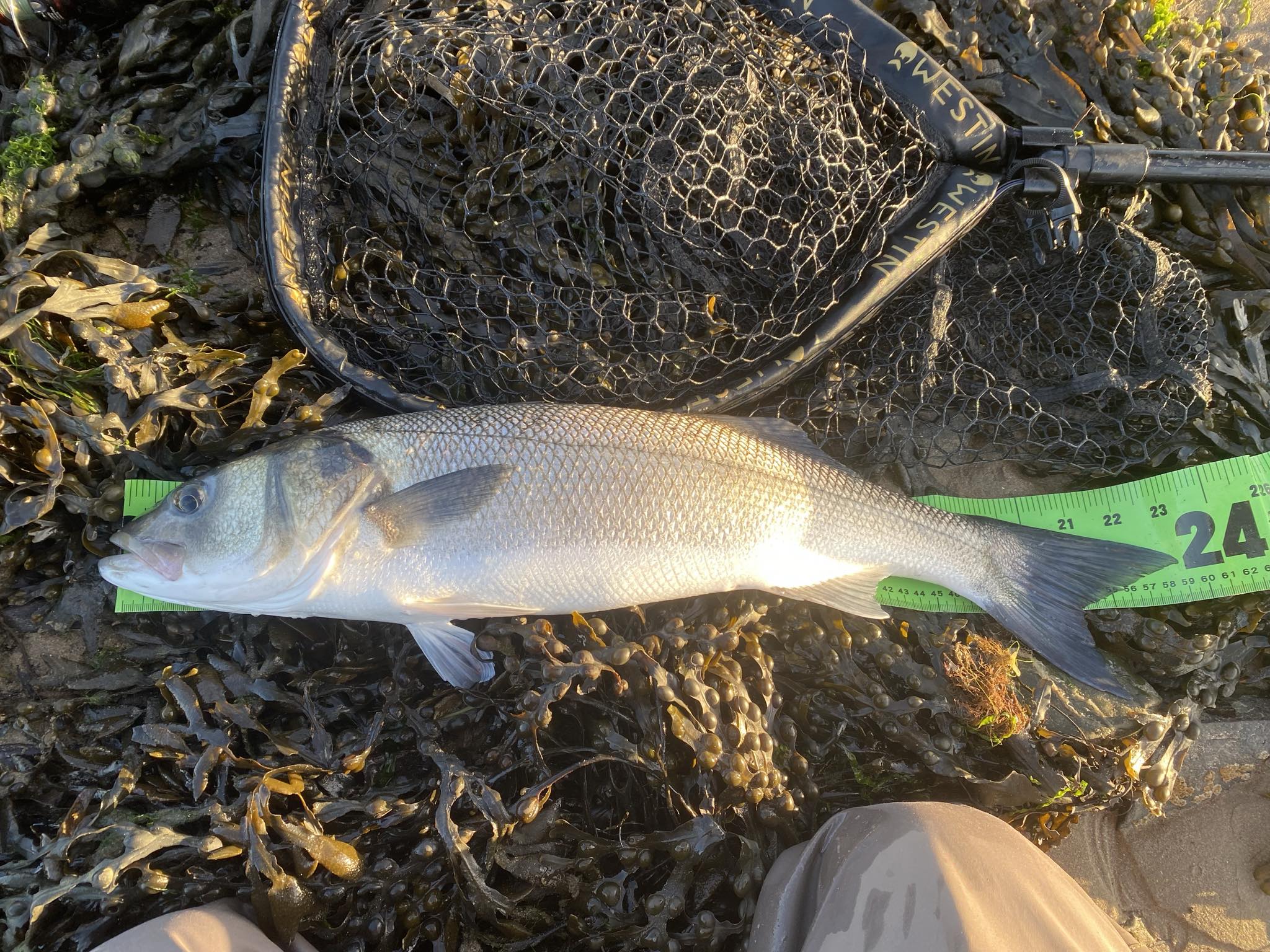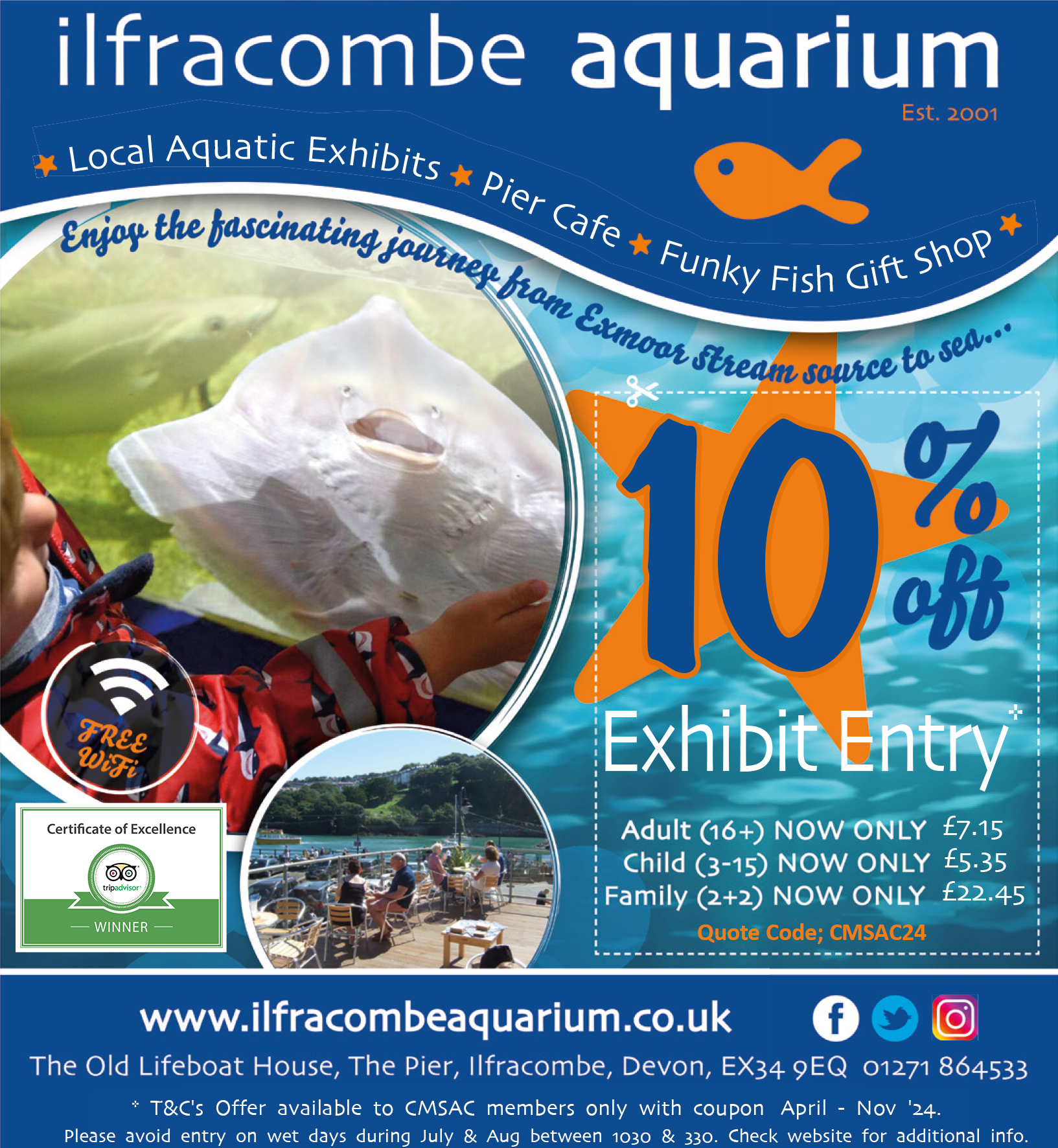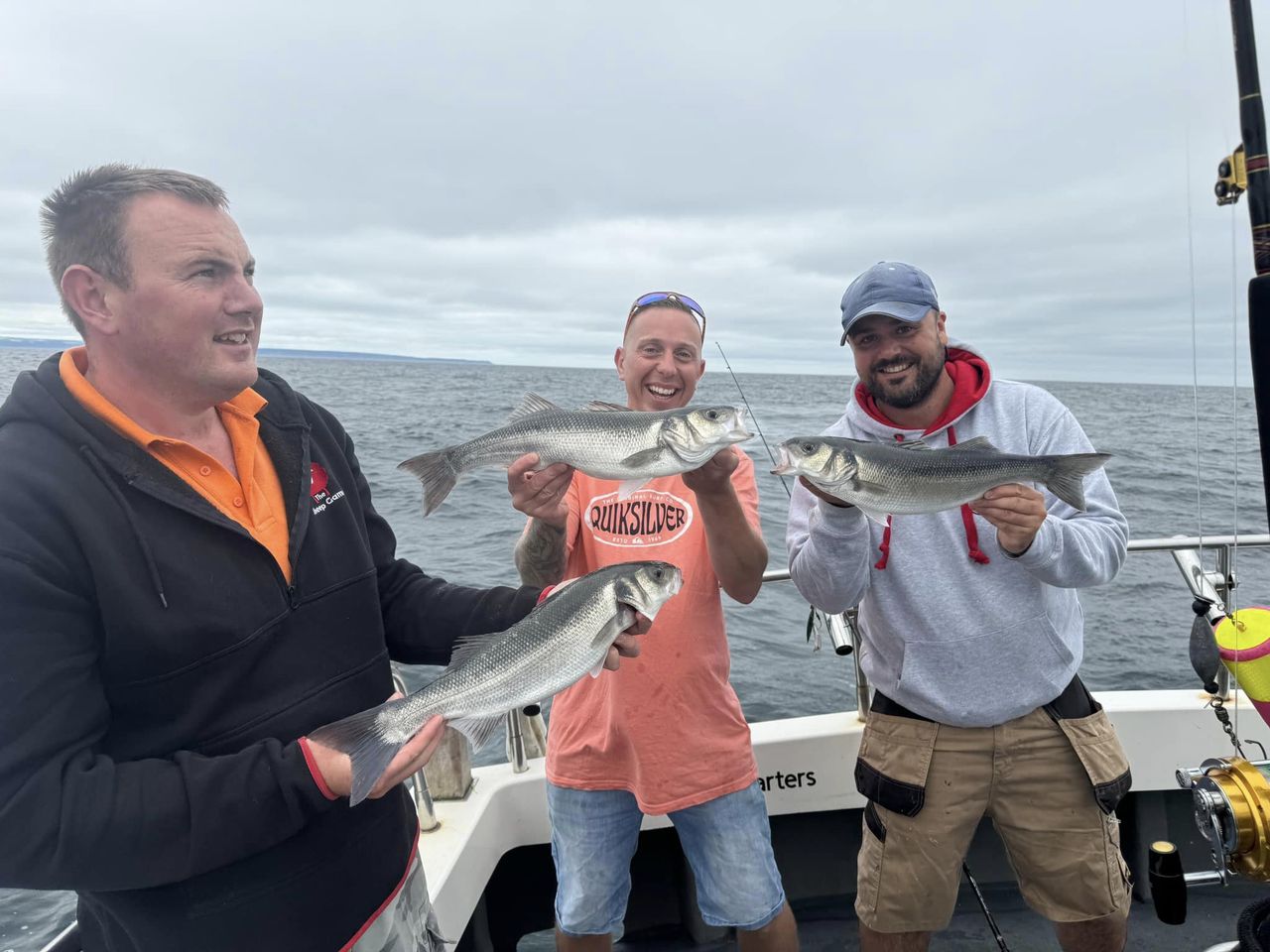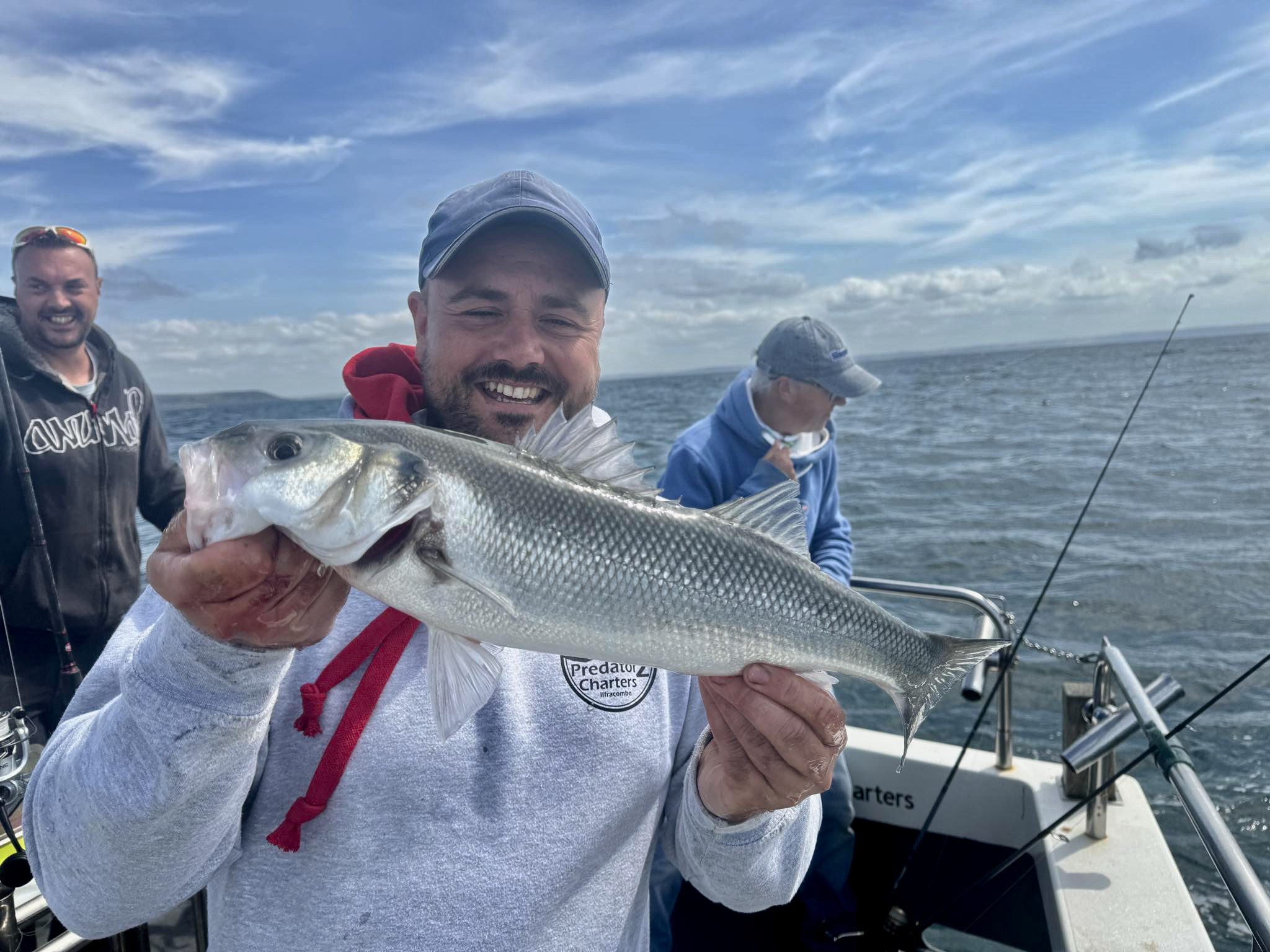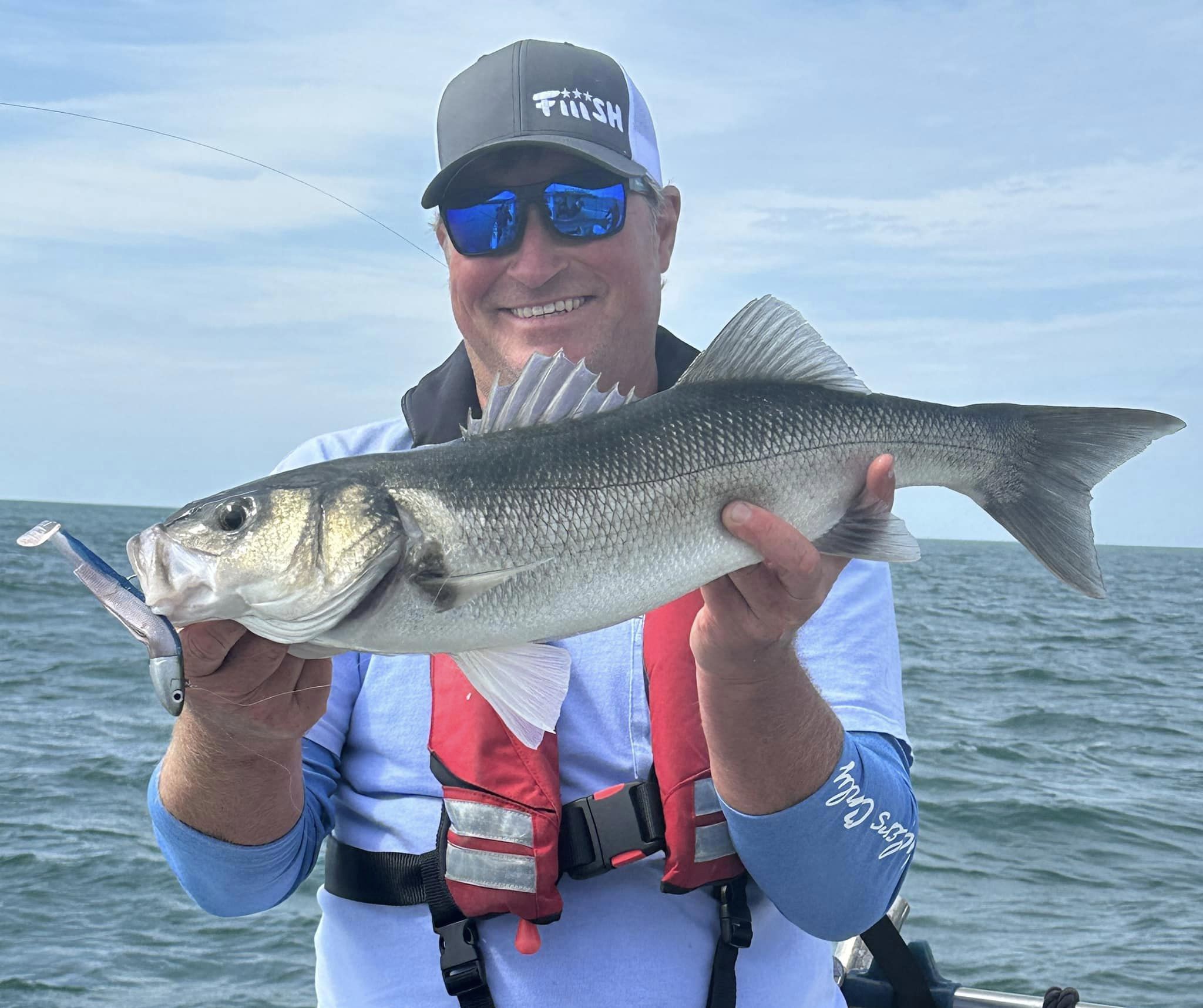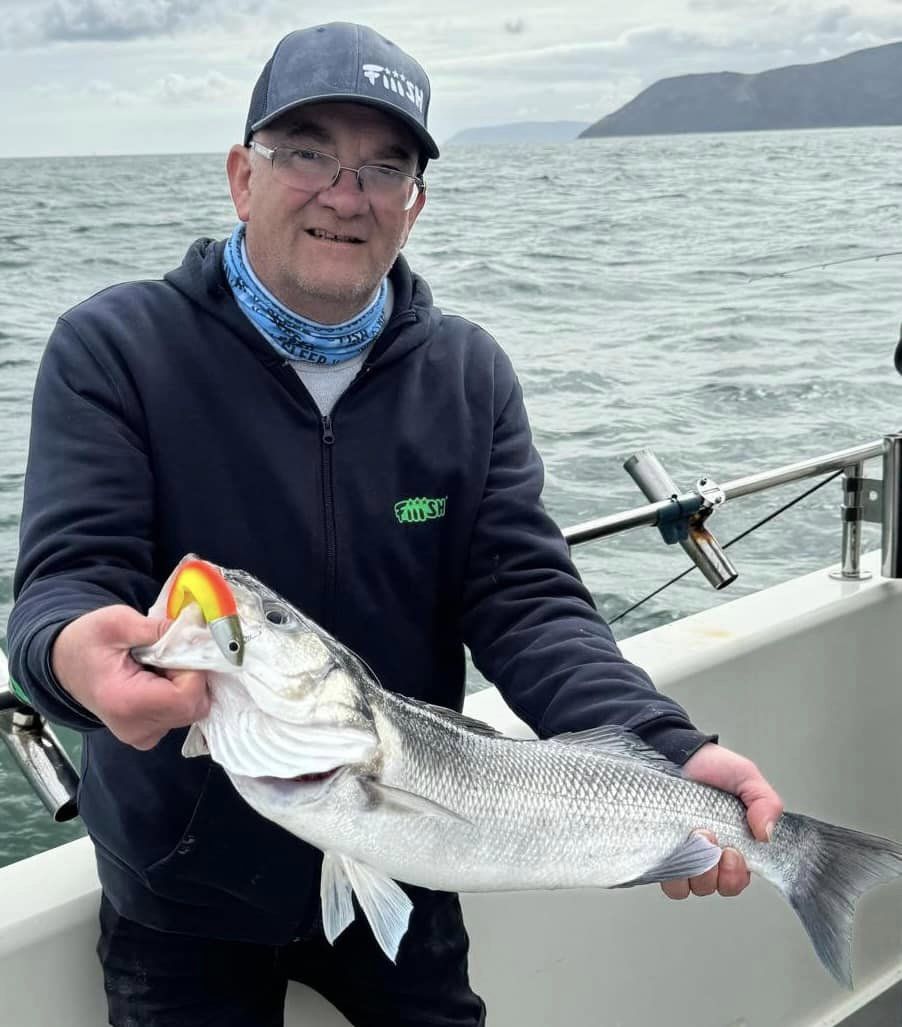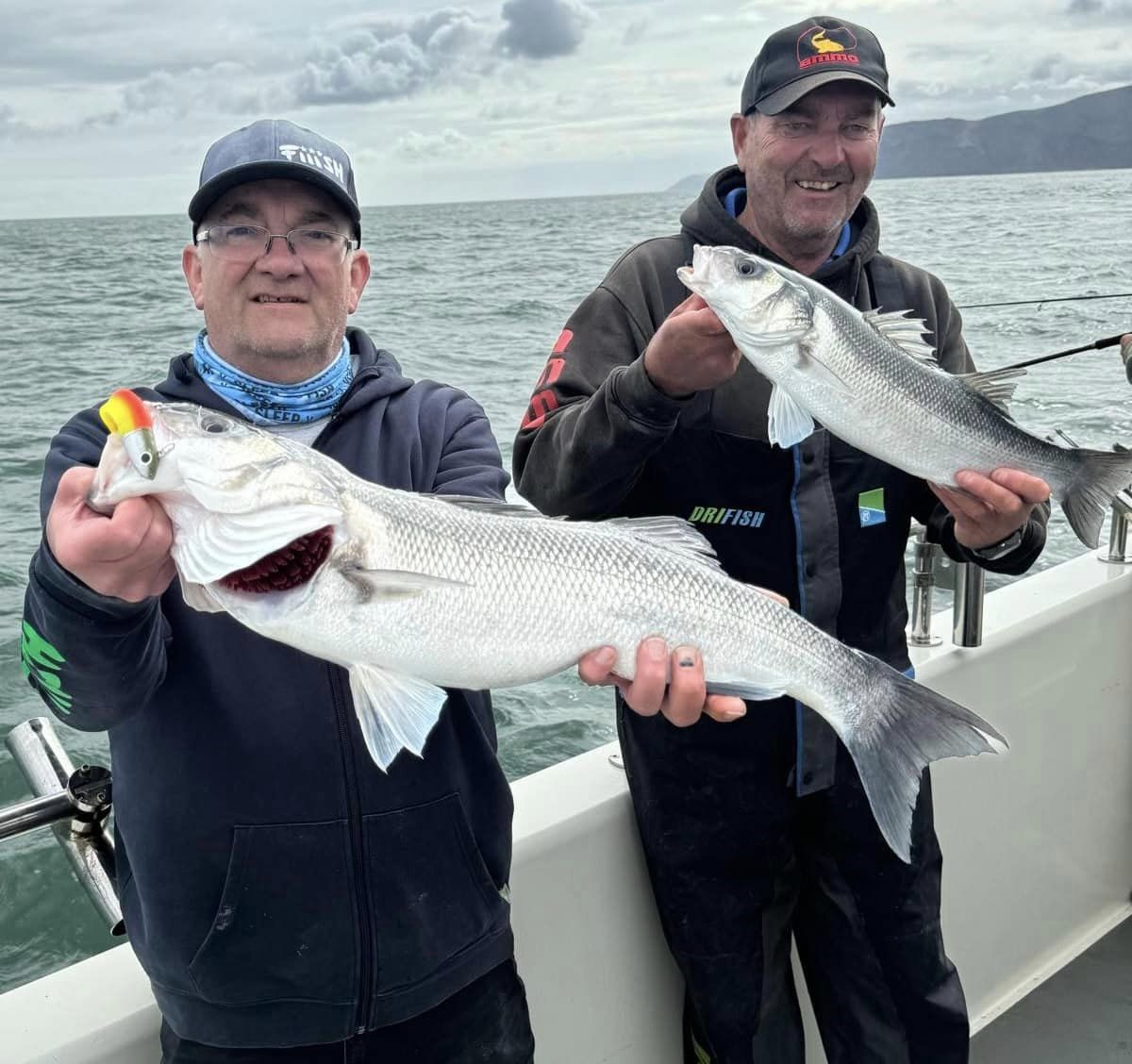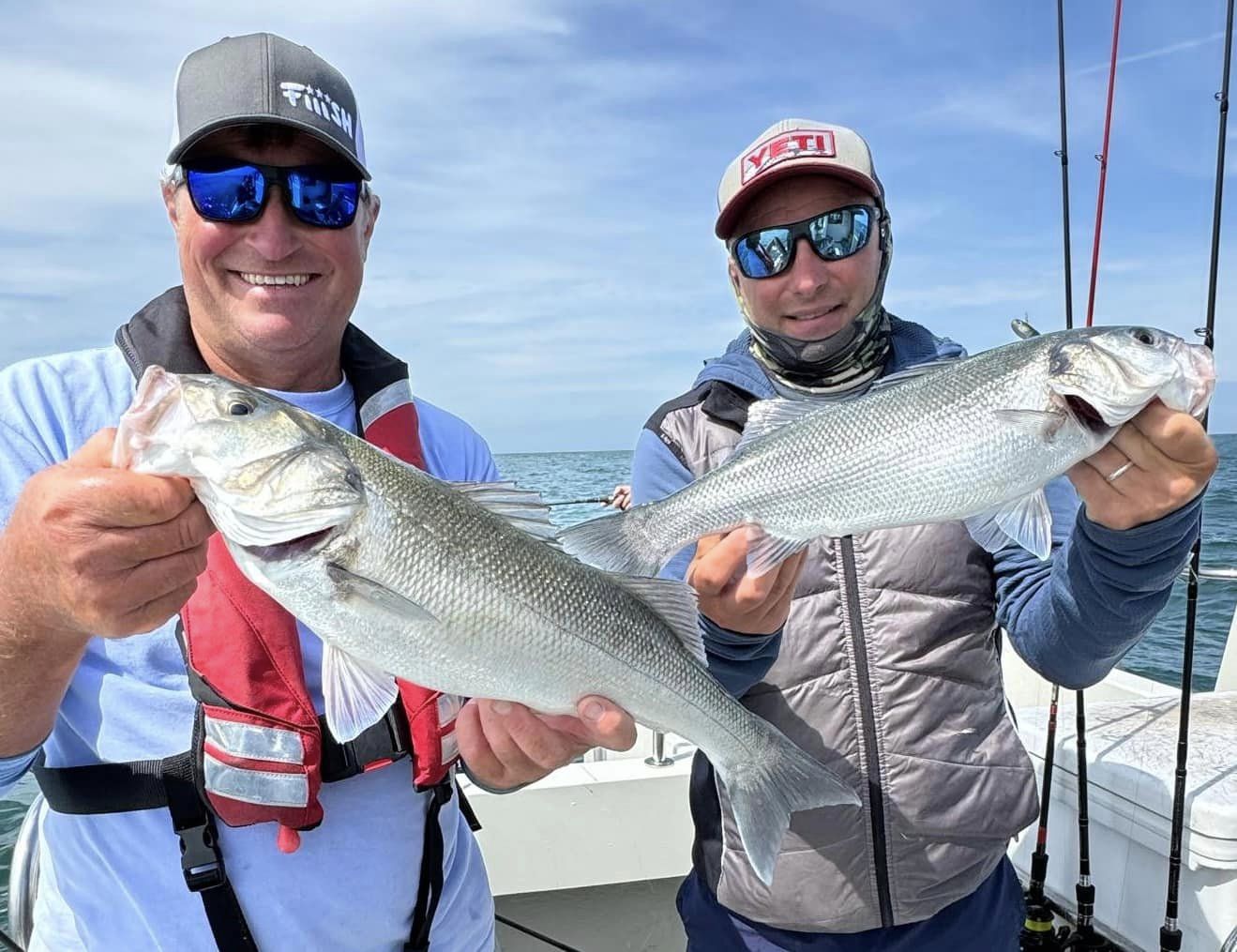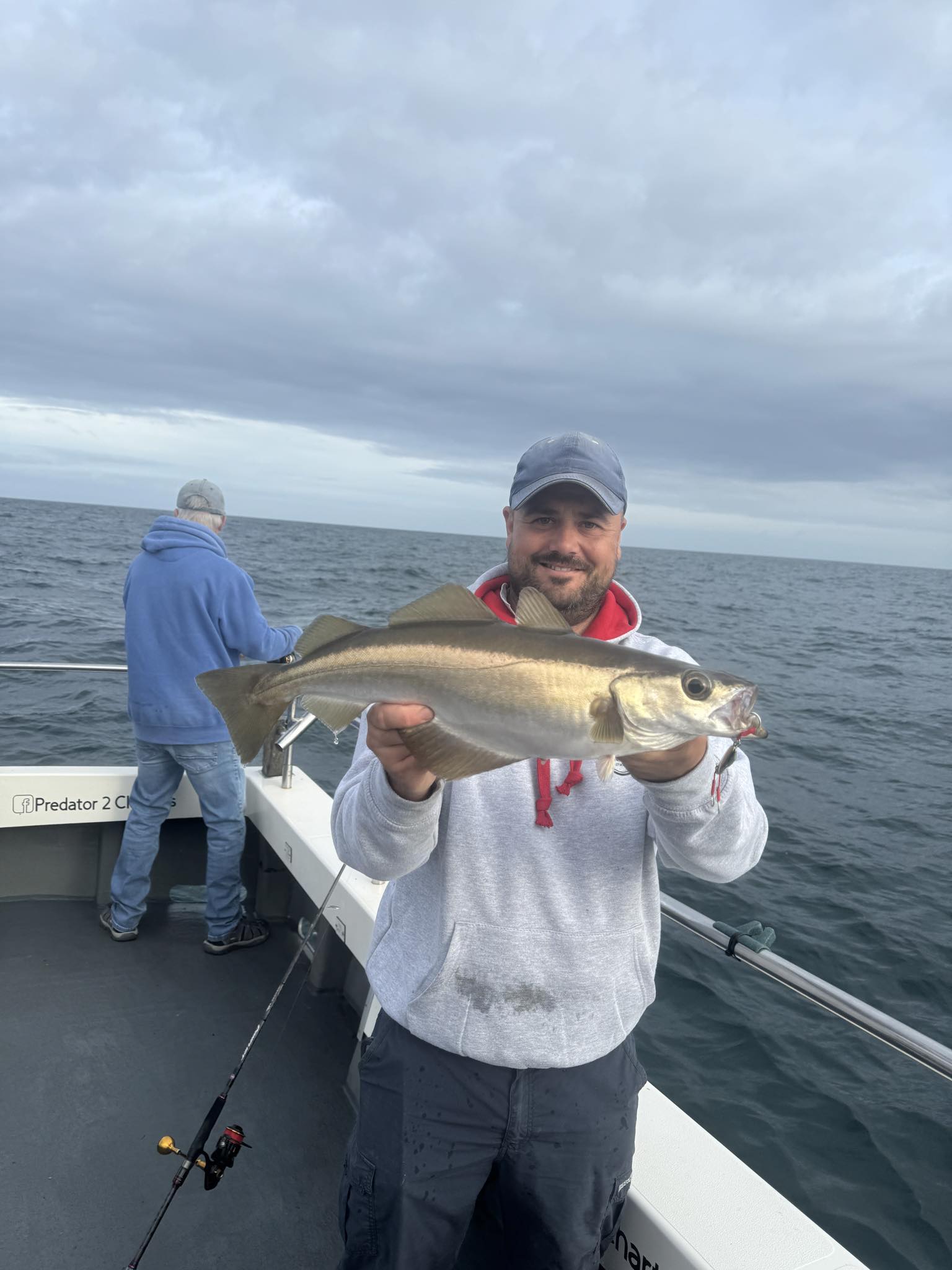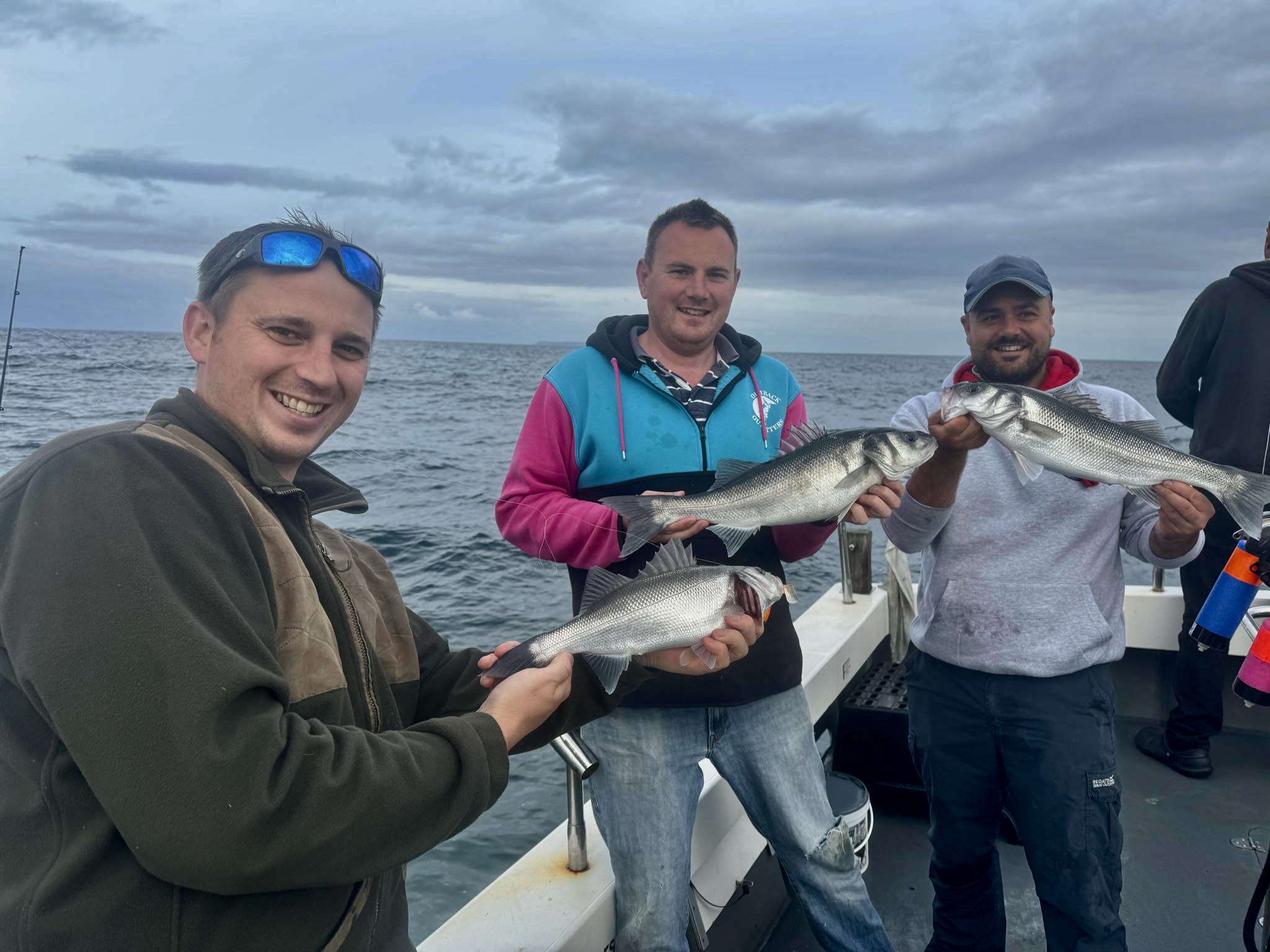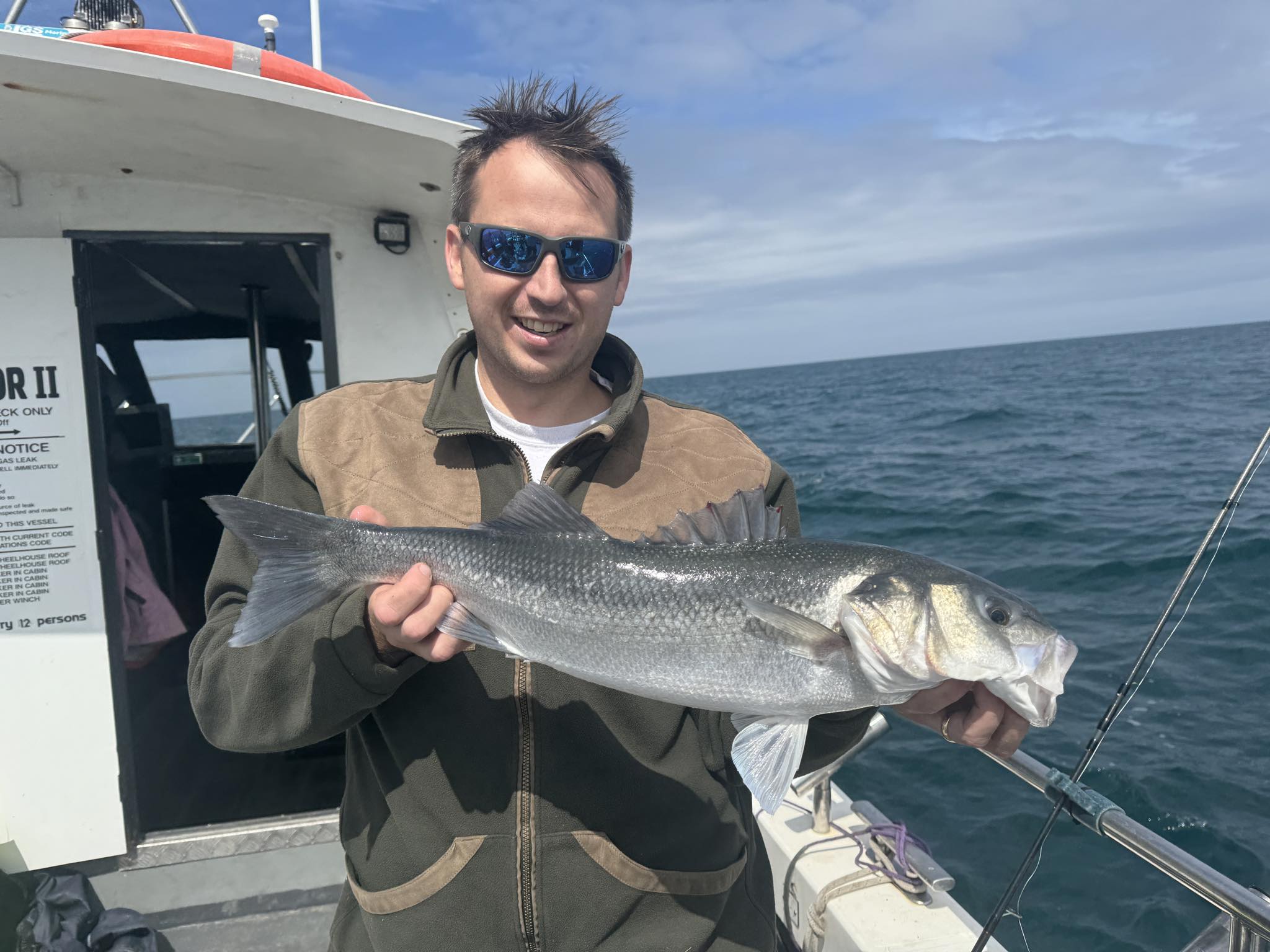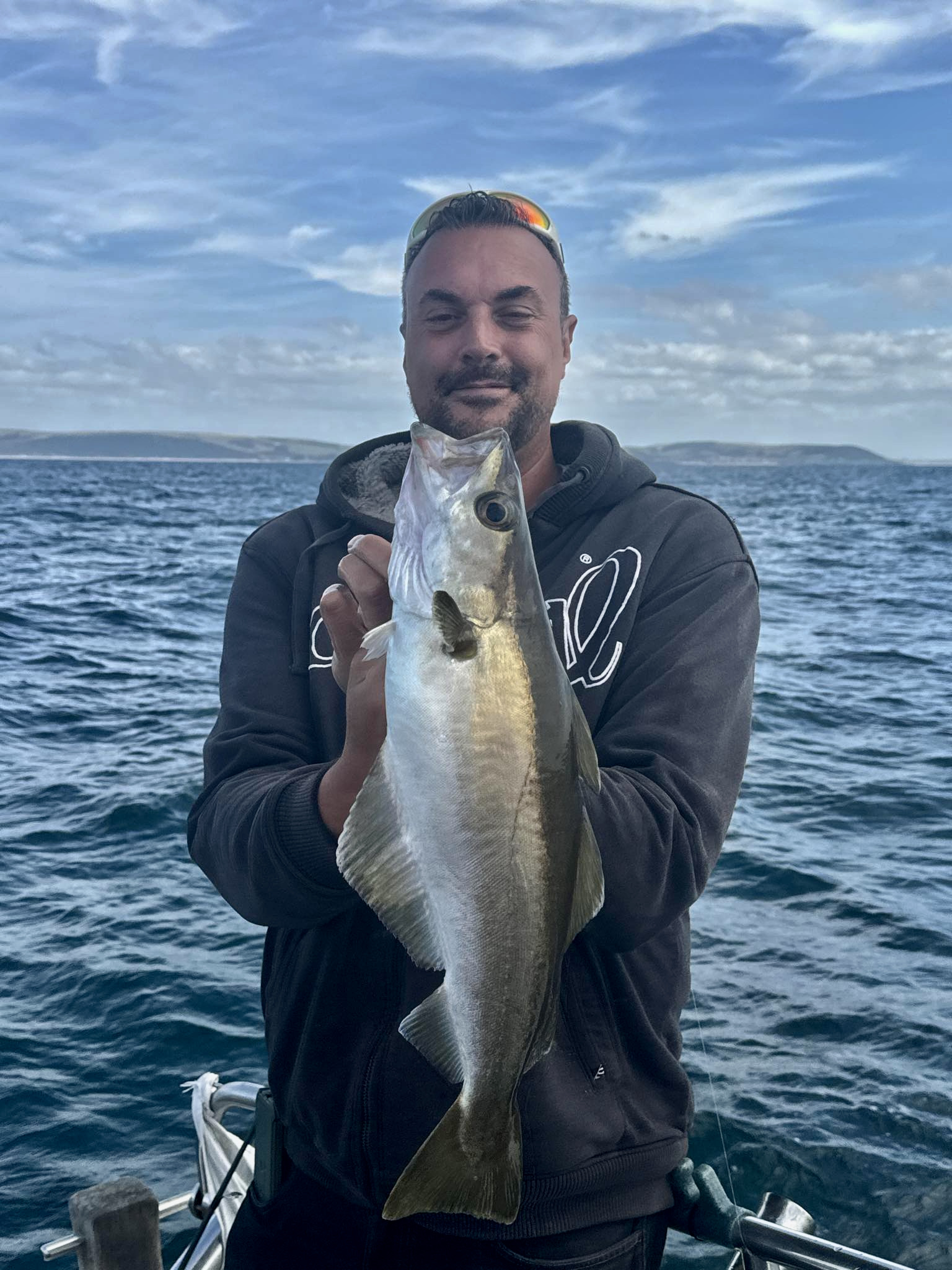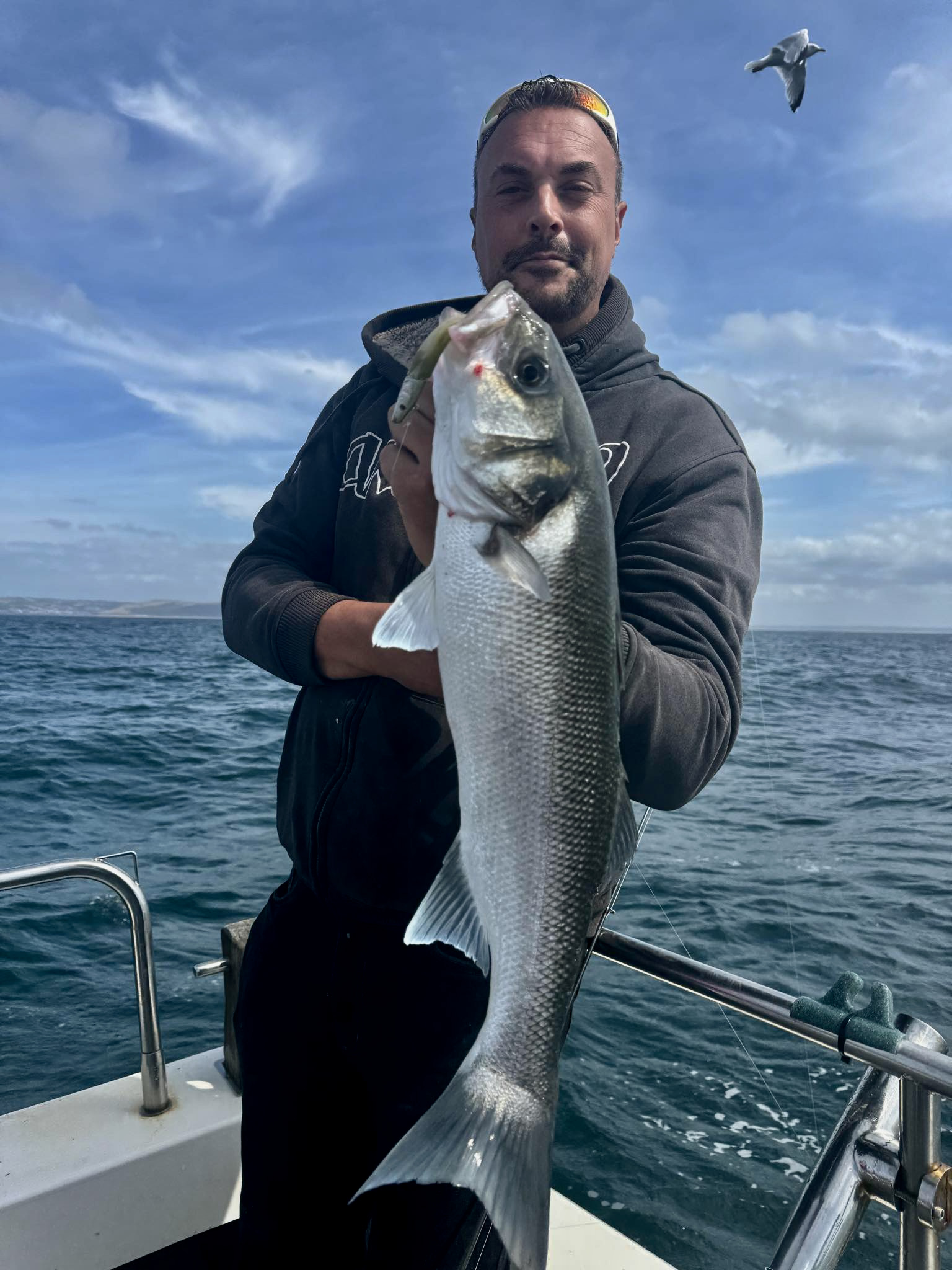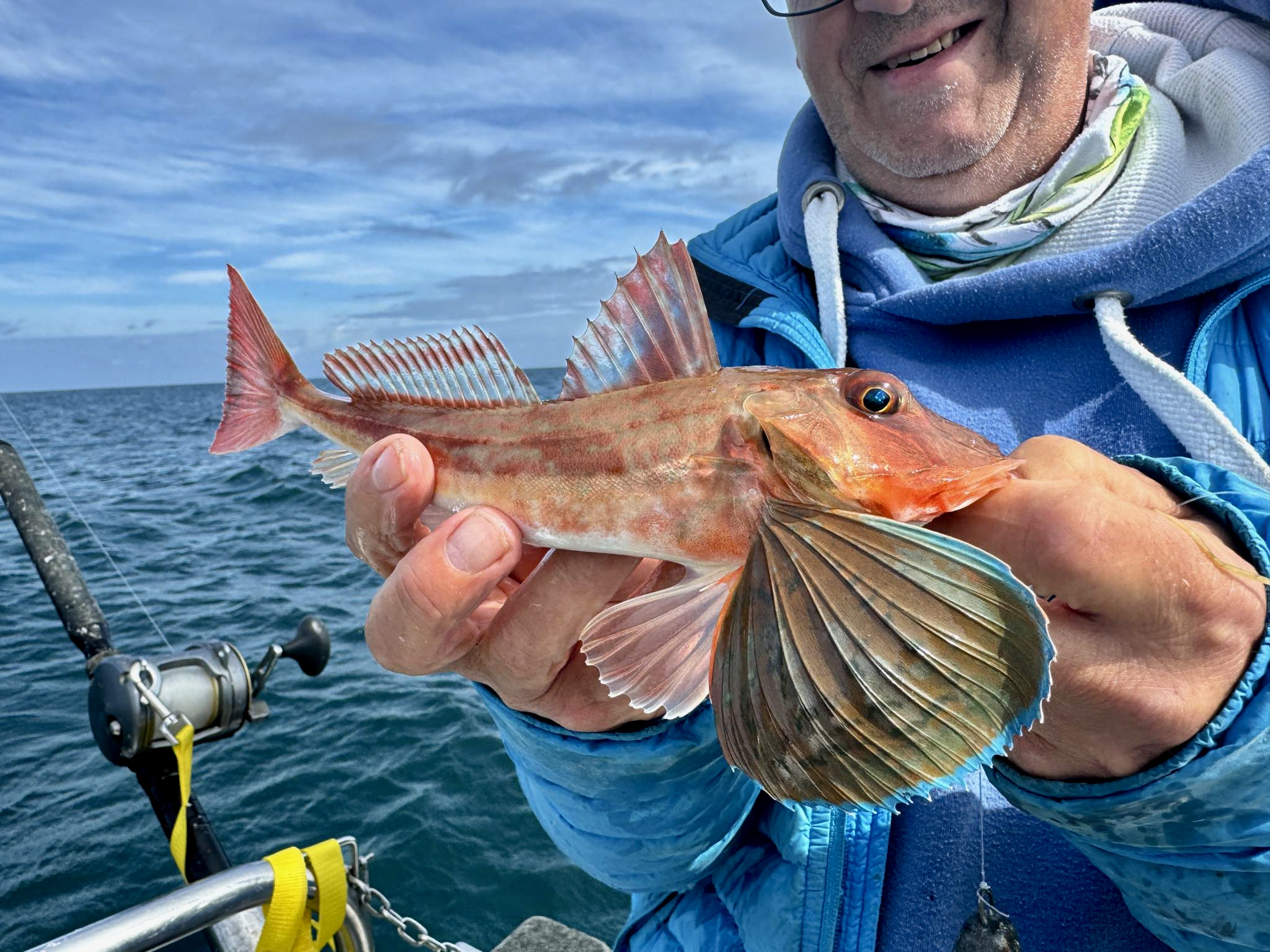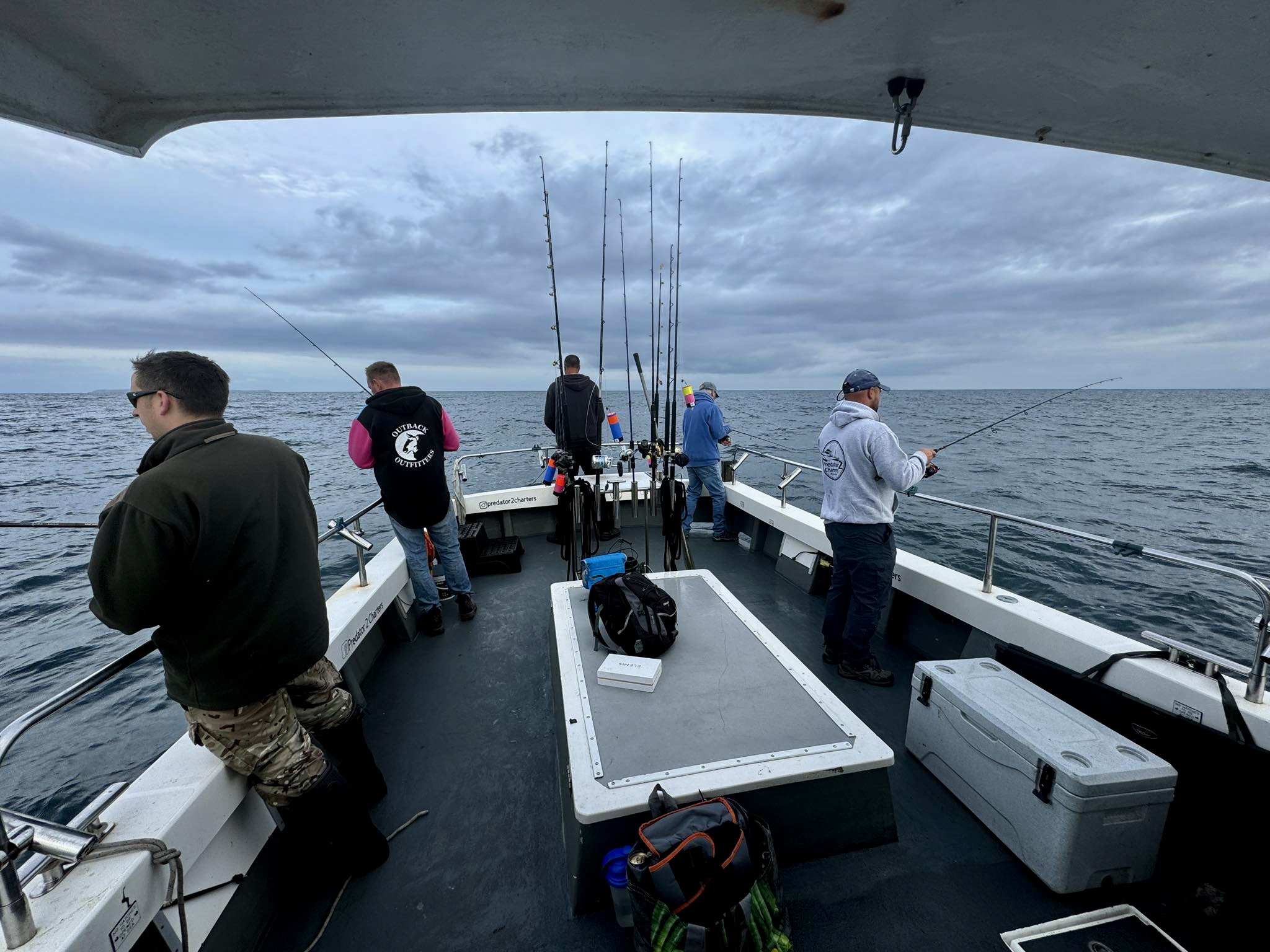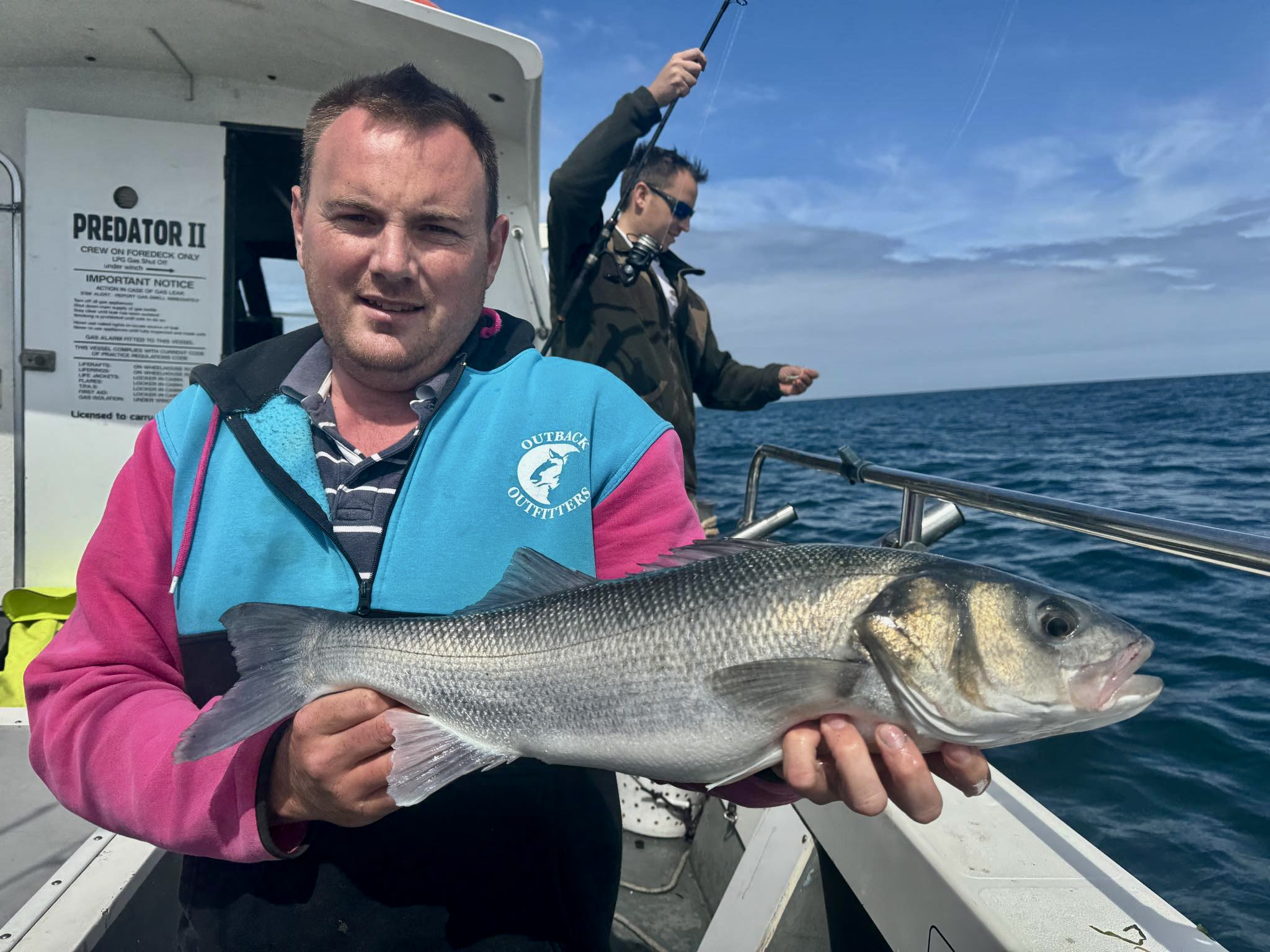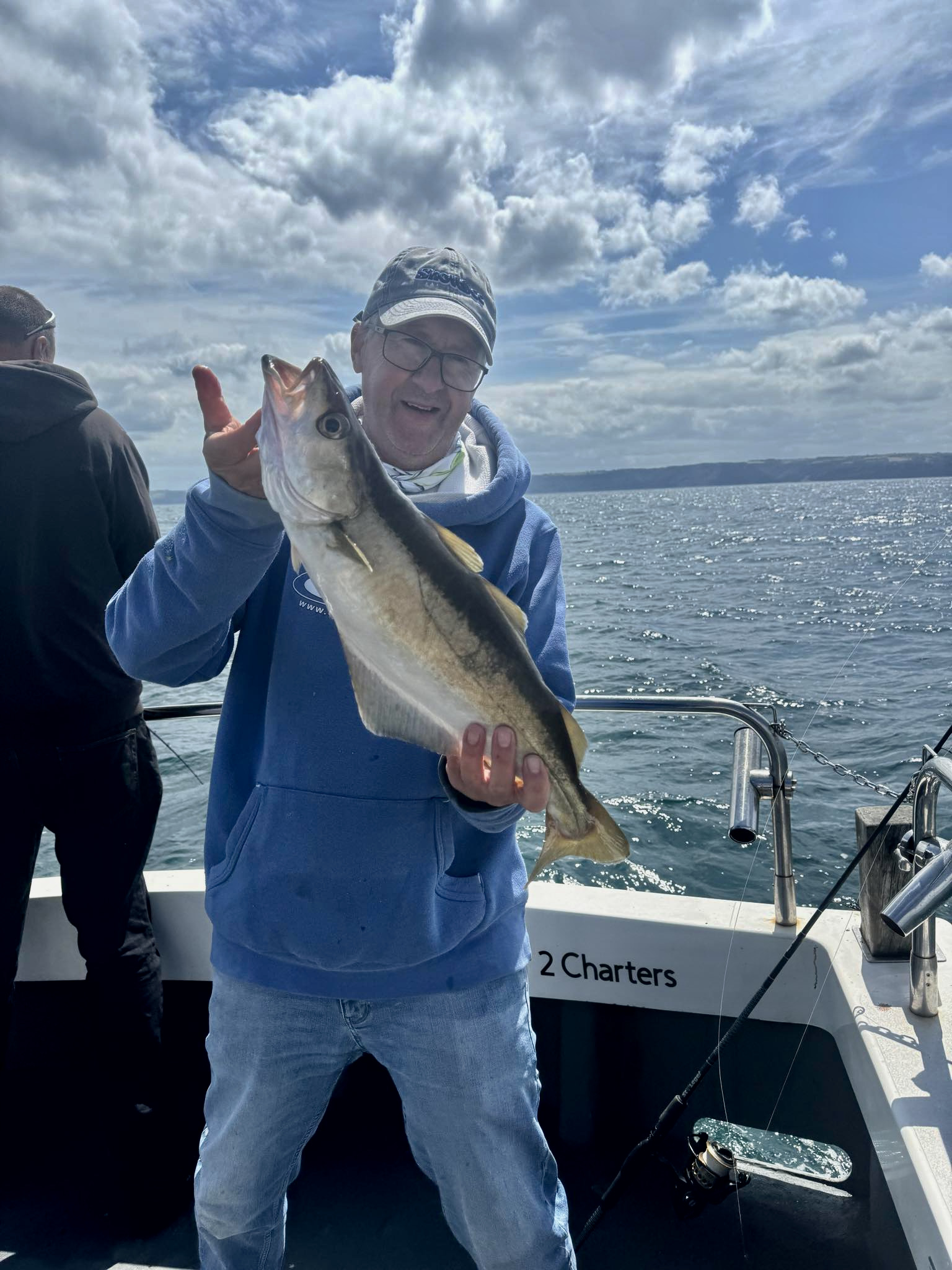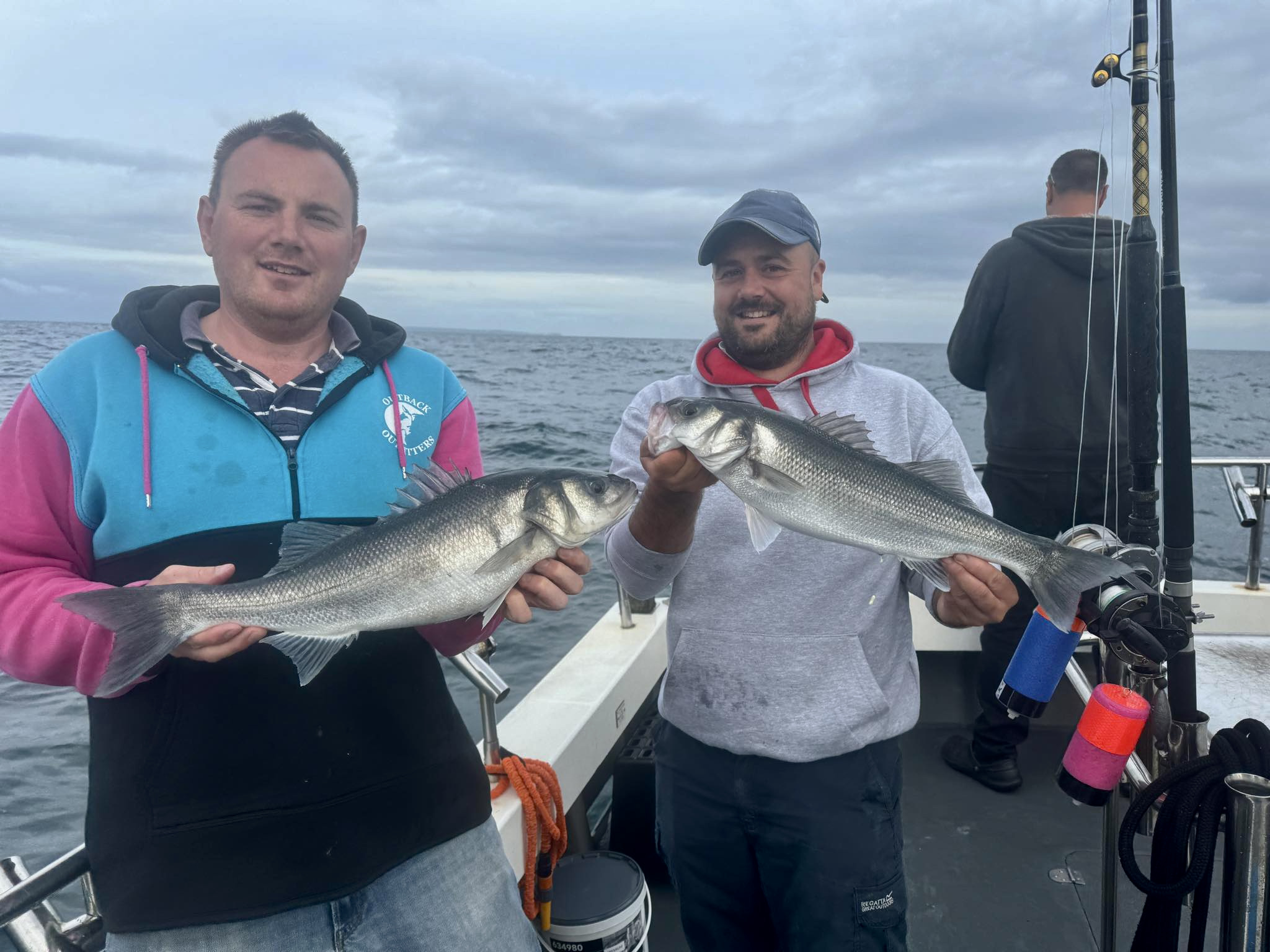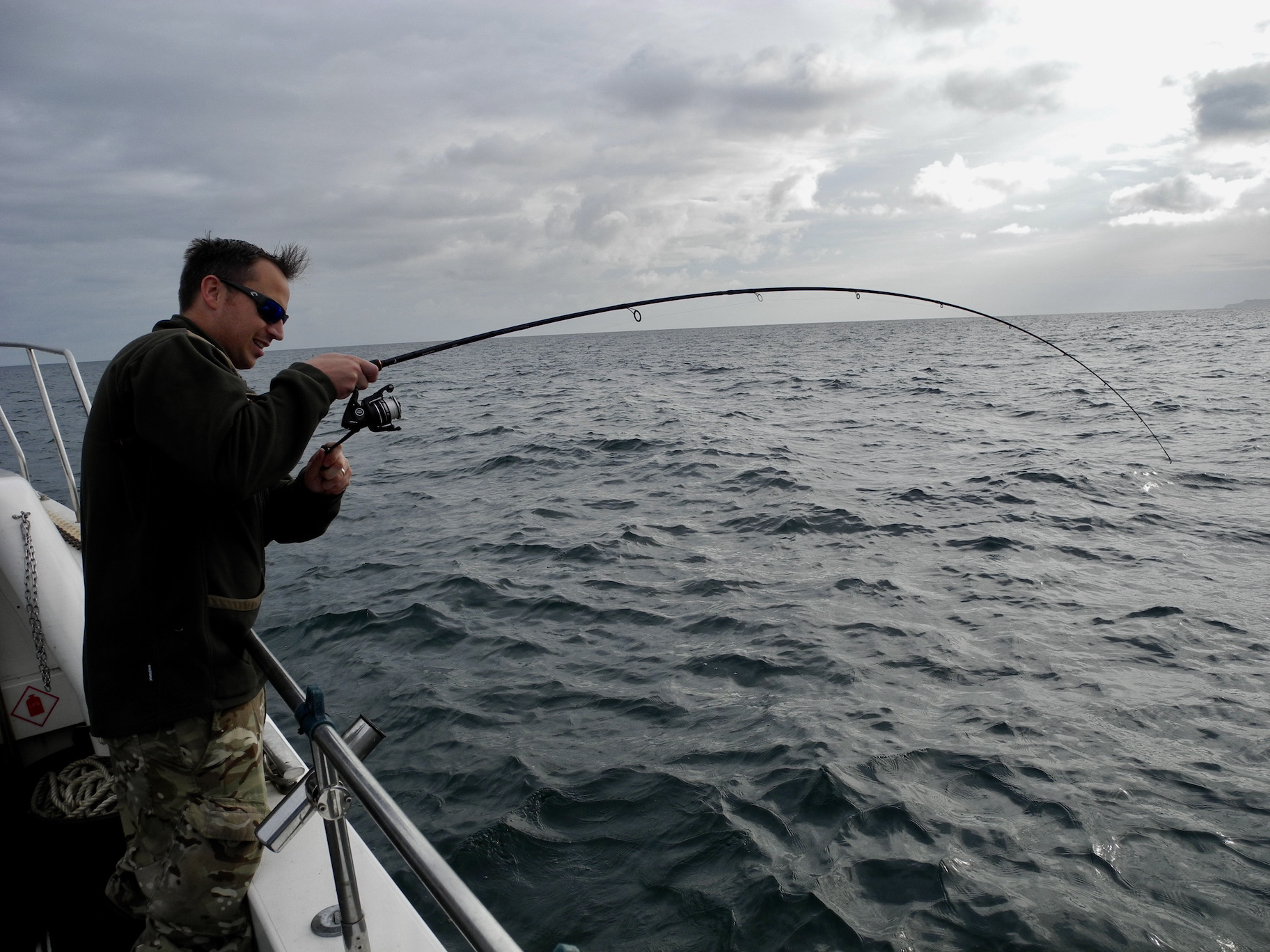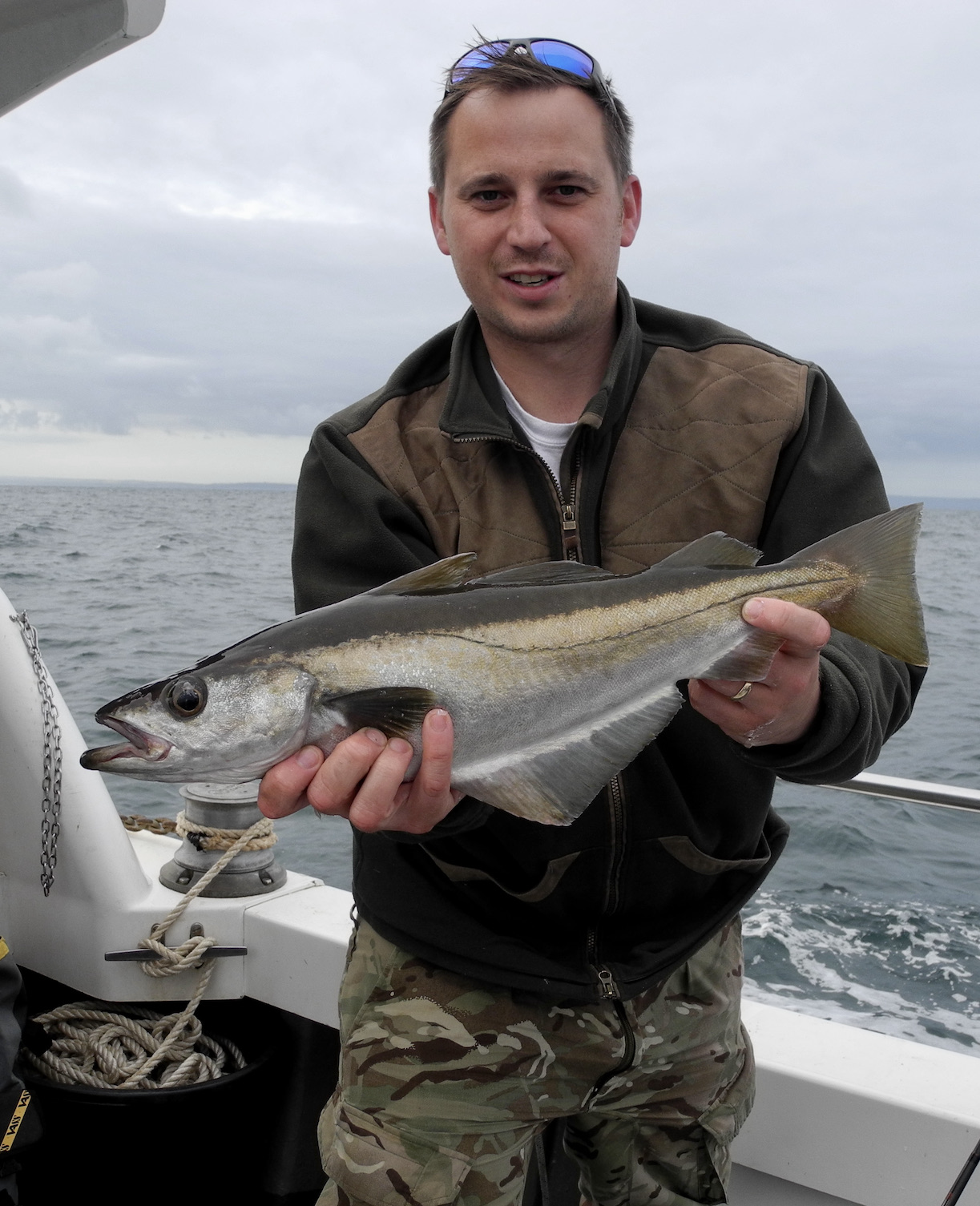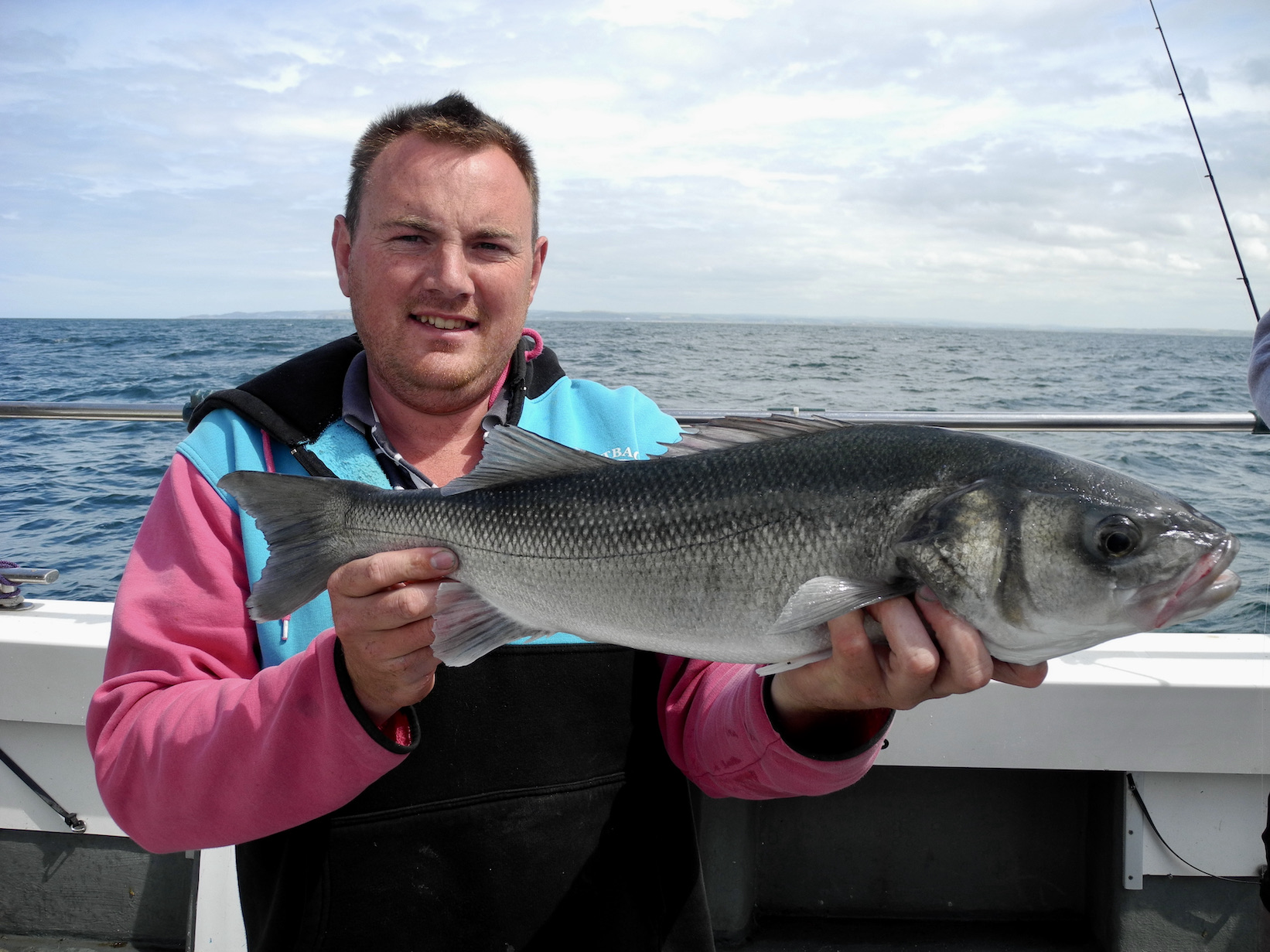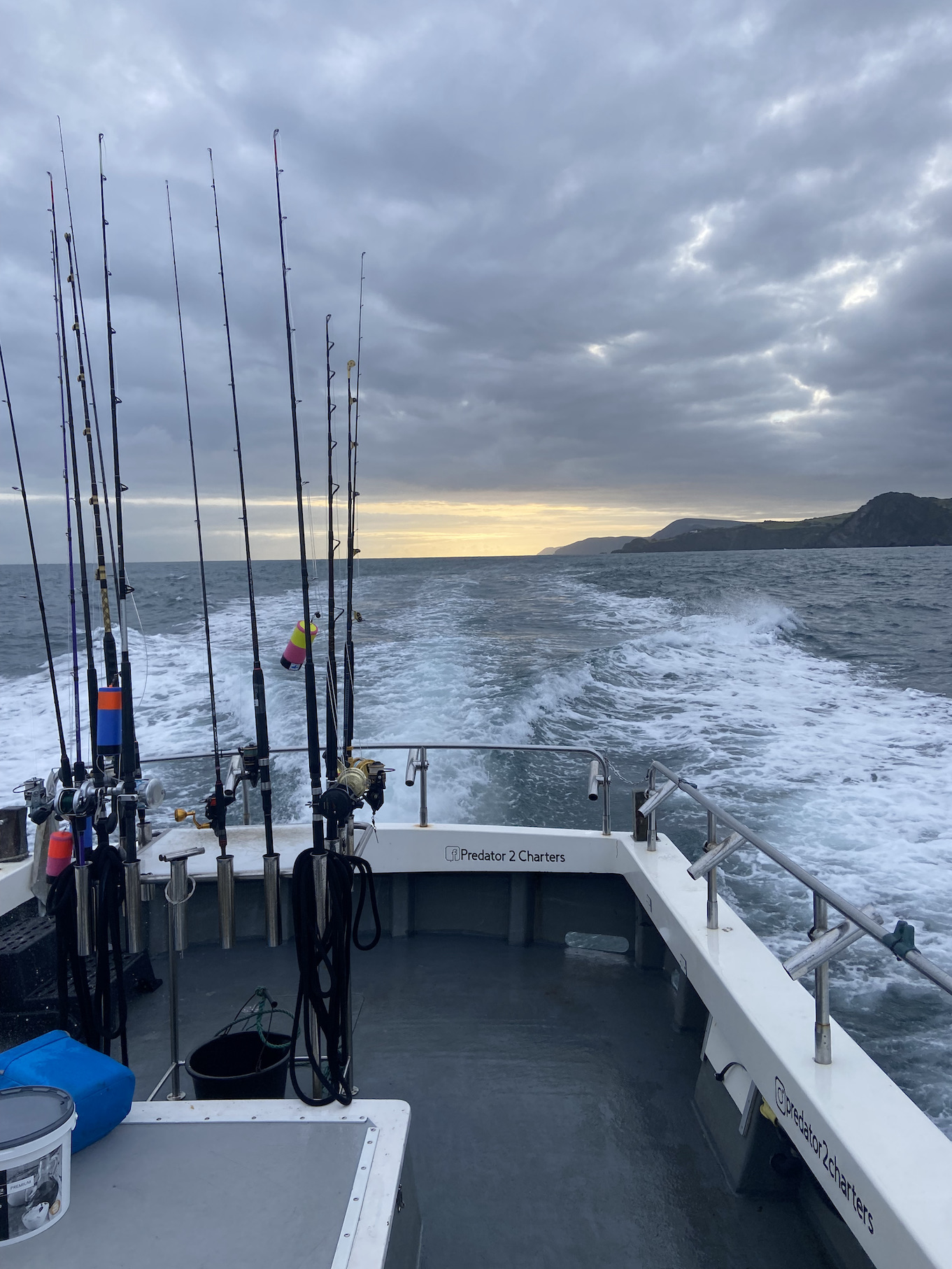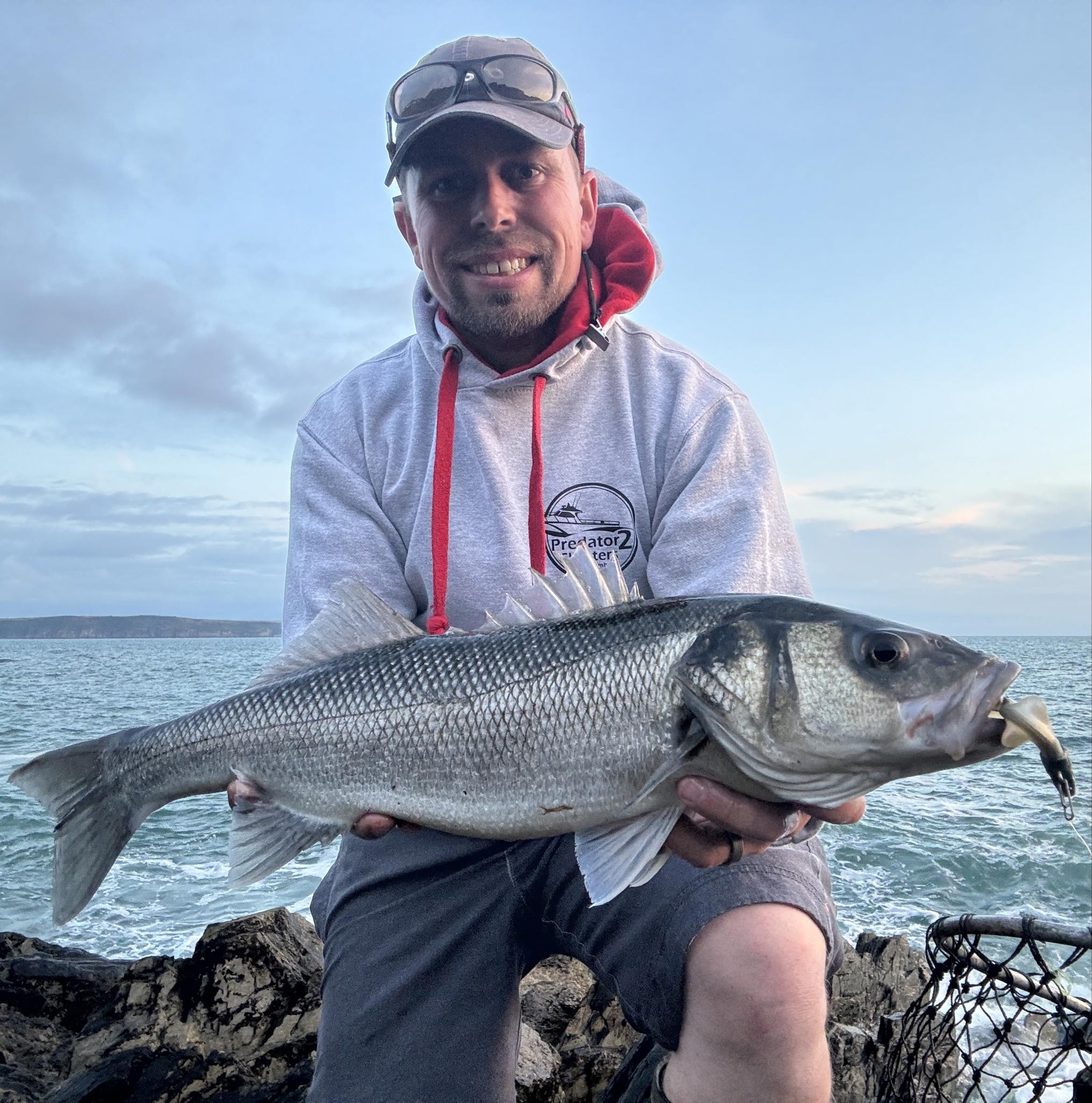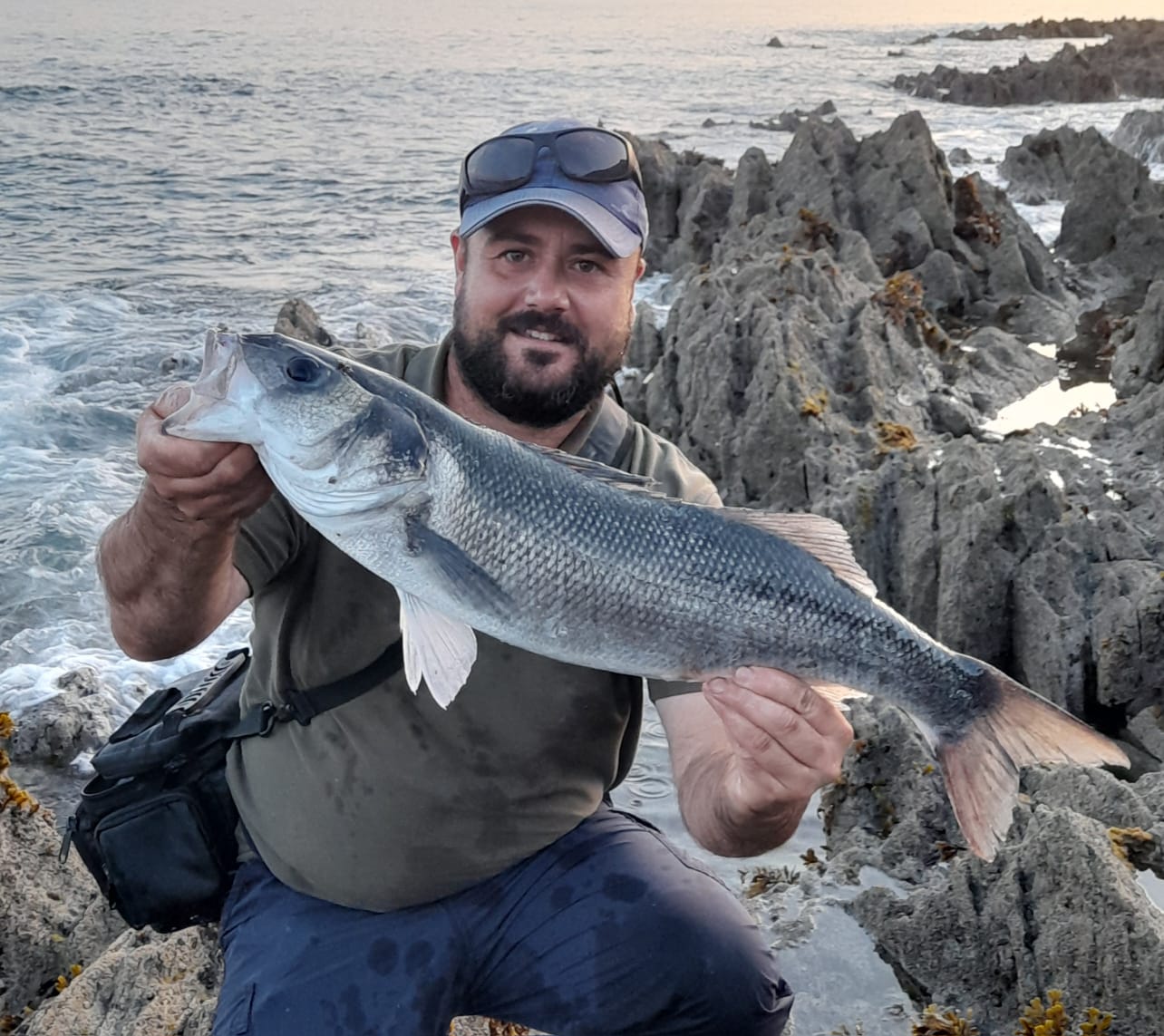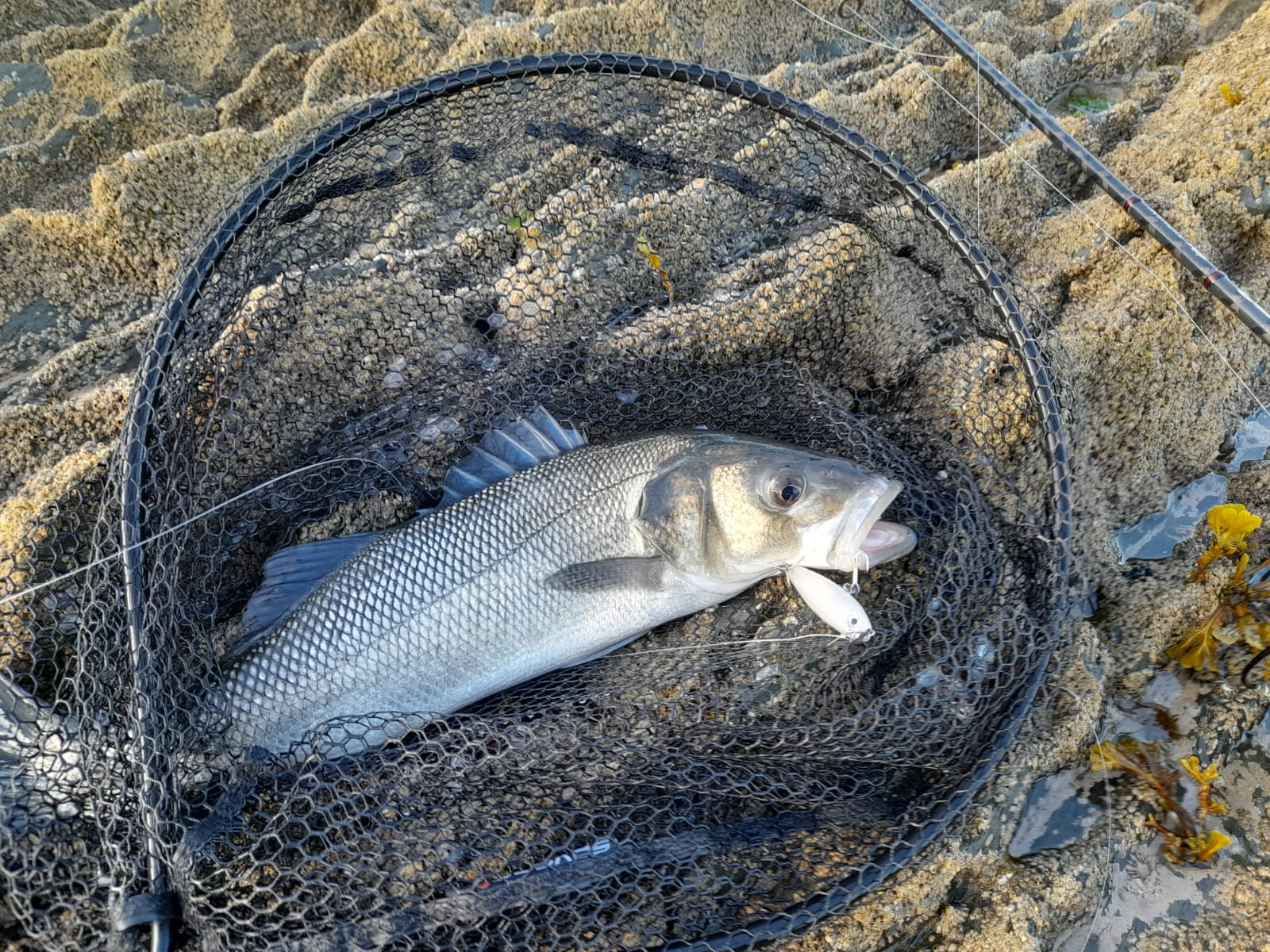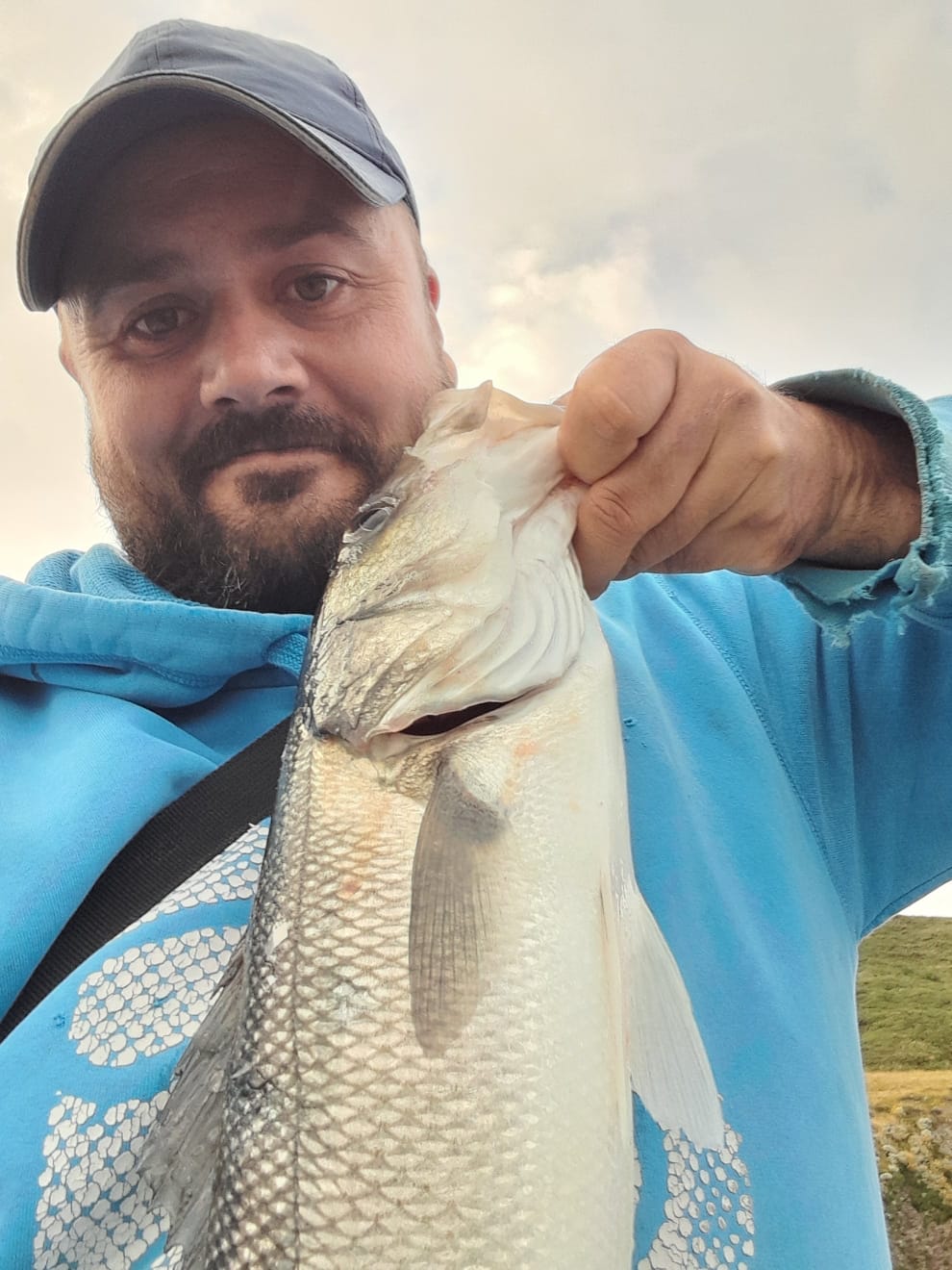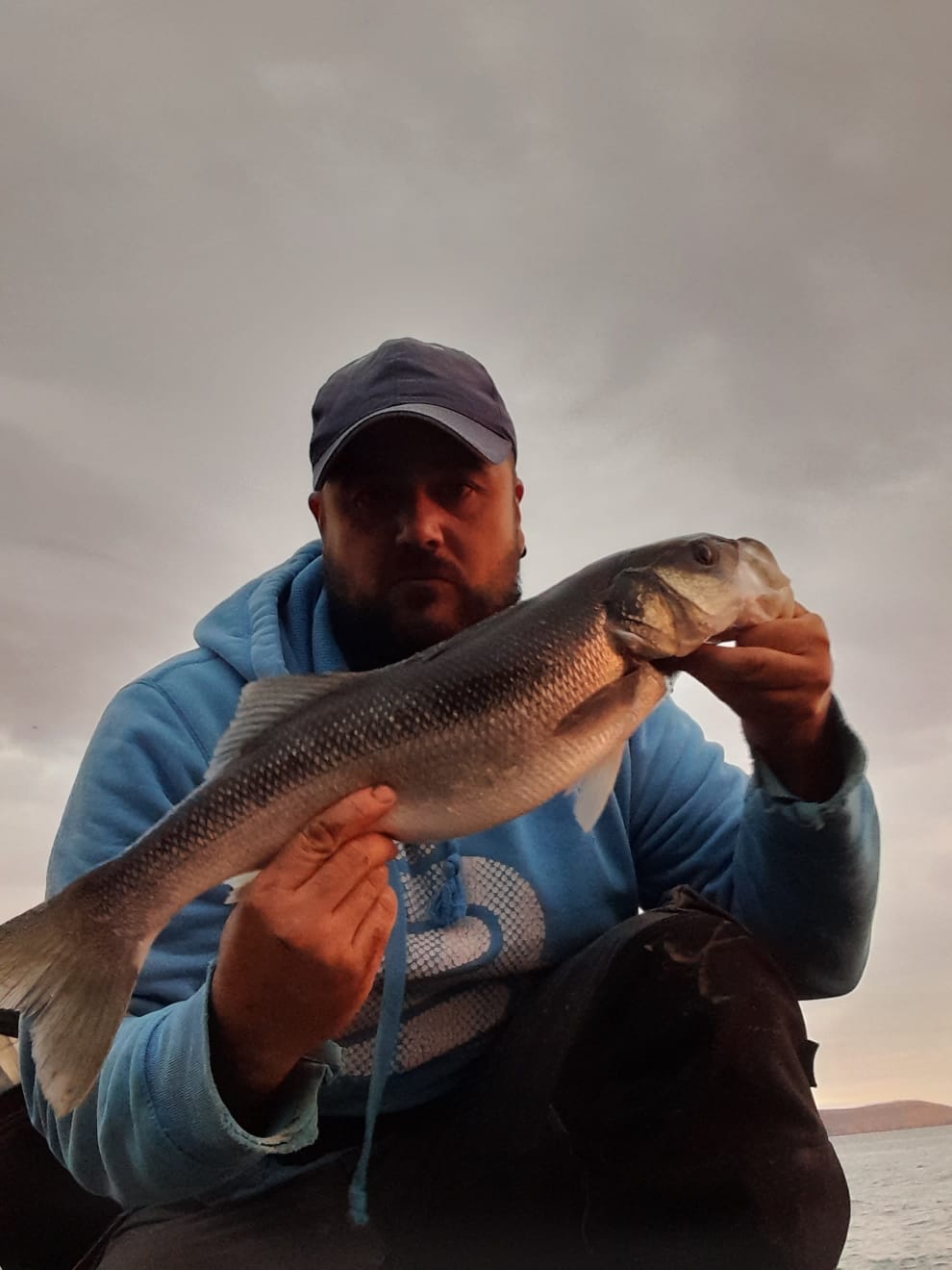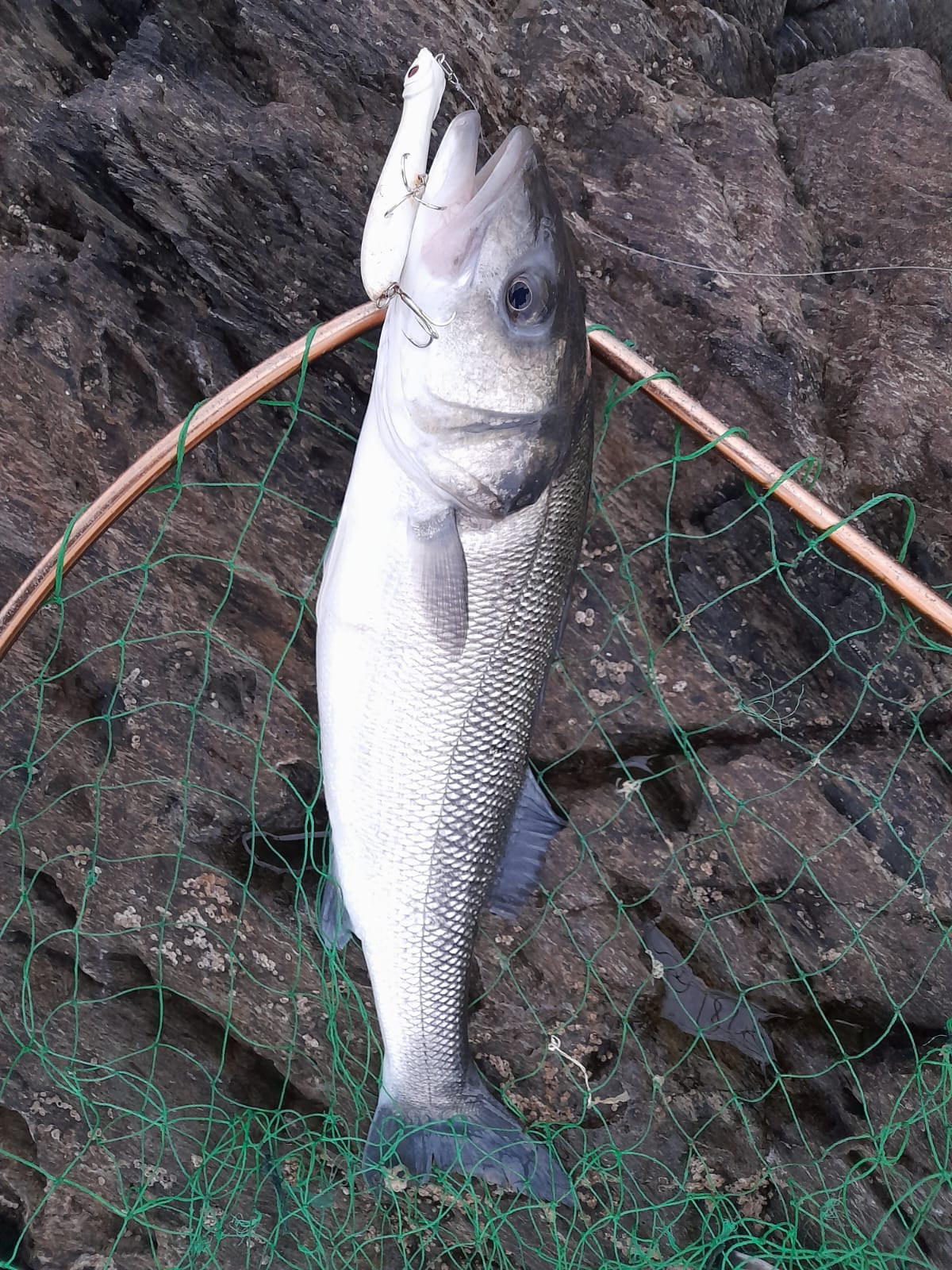
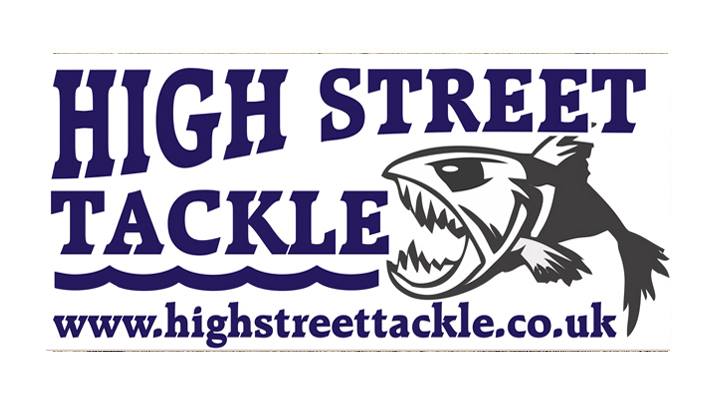


Ilfracombe Harbour an oasis of calm as a glow appears to the East as the sun starts to climb from its overnight absence. The sounds of voices drift across the calm waters of the harbour as boats are readied for the day ahead.
Dan Welch and Ross Stanway are already on board Predator 2 readying the boat for another mates trip to continue the exploration of the Bristol Channels potential.
As I arrive at the Quay I speak to three anglers sat waiting to board Dan Hawkins Reel Deal. They have driven overnight from Oxford and are hoping to connect with the porbeagle that prowl the waters at the mouth of the Bristol Channel.
We are heading out to fish with lures hopping from wreck to reef and watching for signs of feeding birds that could indicate shoals of silver bass. Dan Hawkins on Reel Deal had found some quality bass the previous day whilst travelling back from an unsuccessful foray to the shaking grounds.
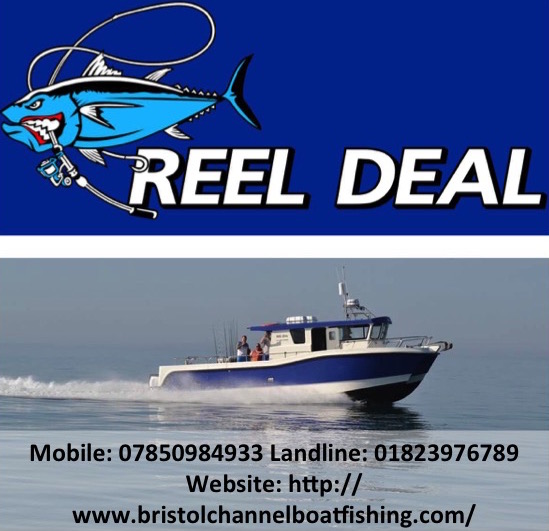

Todays friends group consisted of Skipper Dan Welch, Ross Stanway, Shaun Quartly, Shane Murch, Paul Lorrimore, Callun Gove and myself. Dan is keen to continue to explore the lure fishing potential and today we are heading West to fish marks off Baggy Point and Bideford Bay.

There is a still a bit of chop on the sea, residue from the previous days stronger winds. We were all full of hope and optimism for the adventure that lay ahead as we bounced over water watching the spectacular sunrise above towering cliffs up channel from Ilfracombe.
We passed the familiar rock outcrops of Bull Point and Morte Point before reaching the first mark a good distance off Baggy Point. By now the sun was higher in the sky its warm rays illuminating the seascape.
We all tied on the lures that we had confidence in sending them down into the deep clear water to connect with the fish that lurk around the rusting wreck.
There are surprisingly many wrecks scattered around the Bristol Channel, symptoms I guess from an era when navigational equipment and modern safety was less advanced. Wrecks provide shelter and food for many fish and I ponder if we could create artificial reefs to improve upon fish populations. Perhaps the new seaweed farms, and off- shore windfarms will create some protected habitat that will benefit fish populations?
Within seconds of the lures reaching their destination rods hooped over as hard fighting pollock smashed into the lures diving for sanctuary within the rusting hulk. The first drift produced some stunning pollock to around 4lb and bass to 3lb.










There is a great deal of skill involved in manoeuvring a boat into position so that the anglers lures can be presented to the fish. The wreck or reef is shown on the boats navigation system, but the strength and direction of tide has to be factored in with the wind direction as to the boats starting position that is calculated to give maximum time drifting over the structure.
It is noticeable that each drift tends to bring diminishing returns as the fish seem to wise up quickly. Changing lures sometimes seems to bring increased success though I’m not sure if this is my perception or simply luck on the day? I change to a Seadra slow jig decorated with a stunning mackerel flank. It looks good to me and I work the lure with confidence catching several bass and pollock.

Ross Stanway hooks a very powerful fish that powers off testing his light spinning tackle to the limit. Dan assisted by following the fish whilst we all pulled in our lines to watch the drama unfold. We all speculated upon what Ross has hooked hoping that we would at the very least get a glimpse before the gossamer thin braid parted. My guess was a tope as Shaun had had a pollock bitten in half by a hungry tope a few minutes before the fish appearing with the pollock within its jaws before swimming free after shaking its head to tear the fish in half.

We all peered into the clear aqua water, suddenly a shape appeared below the boat. A sleek and powerful tope of around thirty pounds hooked foul hooked in the tail! Dan scooped the fish into the net and swung the fish aboard. Ross wrestled with the powerful fish and held it aloft for a quick photo before dropping it back over the side where it disappeared back into the mysterious depths with a flick of its tail.

After a couple more drifts sport eased off and Dan suggested a move to a rocky pinnacle in Bideford Bay. Half an hour steam away we chatted and watched for birds working that could indicate bait fish.
There is always anticipation on arriving at each new mark asking the question with our lures. Sadly this mark proved to be a pouting haven with these plump fish seizing our lures. Whilst these fish have little sporting value they are a valuable source of food for many predatory fish and their flanks of pearl and beige have a rich beauty in life. Sadly they often perish as their swim bladders are unable to cope with the pressure change as they are brought to the surface. They can be kept for bait or at worst provide a welcome meal for the sea birds that always follow fishing boats.

The light breeze from earlier in the day had by now dropped off leaving the sea a tranquil calm that seems so rare this summer. A commotion a few hundred yards away caught our attention. Was that a huge tail slashing the water amongst a pod of dolphins? A thresher shark perhaps? There have been several sightings recently.

We moved closer, the dolphins swam gracefully rolling in the calm sea. We put out lures hoping for a bass whilst we enjoyed the marvellous spectacle of the dolphins.

After the hectic sport at the start of the day we were now struggling to find feeding fish. We headed back to the wreck where we had started the day. Part way across Bideford Bay we spotted a mass of birds a sure indication along with a couple of fishing boats that bass were in the area.

Indications on the fish finder confirmed the presence of fish and so we sent down our lures. I hooked a hard fighting bass of around 5lb and several other smaller fish were added to the days tally before the birds dispersed and the fish disappeared.

By now a brisk east wind was sweeping down the Bristol Channel creating white caps on the waves. Judging by the Beaufort scale it was indeed a fresh breeze.
The Beaufort Scale is an empirical measure that relates wind speed to observed conditions at sea or on land. Its full name is the Beaufort wind force scale.
| 5 |
Fresh Breeze |
29-38 |
19-24 |
17-21 |
Small trees in leaf begin to sway; crested wavelets form on inland waters. Moderate waves, many white horses |
2.0 |
2.5 |
4 |
The Beaufort Scale like the shipping forecast holds a certain resonance and connection with maritime history. That provides me with sense of historical enchantment and fascination with Great Britain’s connection the sea.
Connection with fish seemed harder to find now as the flood tide pushed against the wind. Natures roulette spins continually and we fished the shallow waters off Morte Point in our last roll of the dice. Shaun foul hooked a specimen mullet that fought hard in the tide. Dan tempted a ballan wrasse before declaring time to head back to Ilfracombe.



Ilfracombe on a warm summers day at Summers end was a stark contrast to the peace and tranquillity of the early dawn. Hundreds of tourists rested on the beach, strolled around the shops, licked ice creams and savoured those last few days of the tourist season. How quick this summer has flown. Our son James plays his last game of league cricket as I type this, it is hard to believe, its seems such a short time since he was wielding his bat for the first game of the season.
September brings much expectation for the sea angler of North Devon with so much promise if natures roulette wheel obliges and we play our hands wisely.
